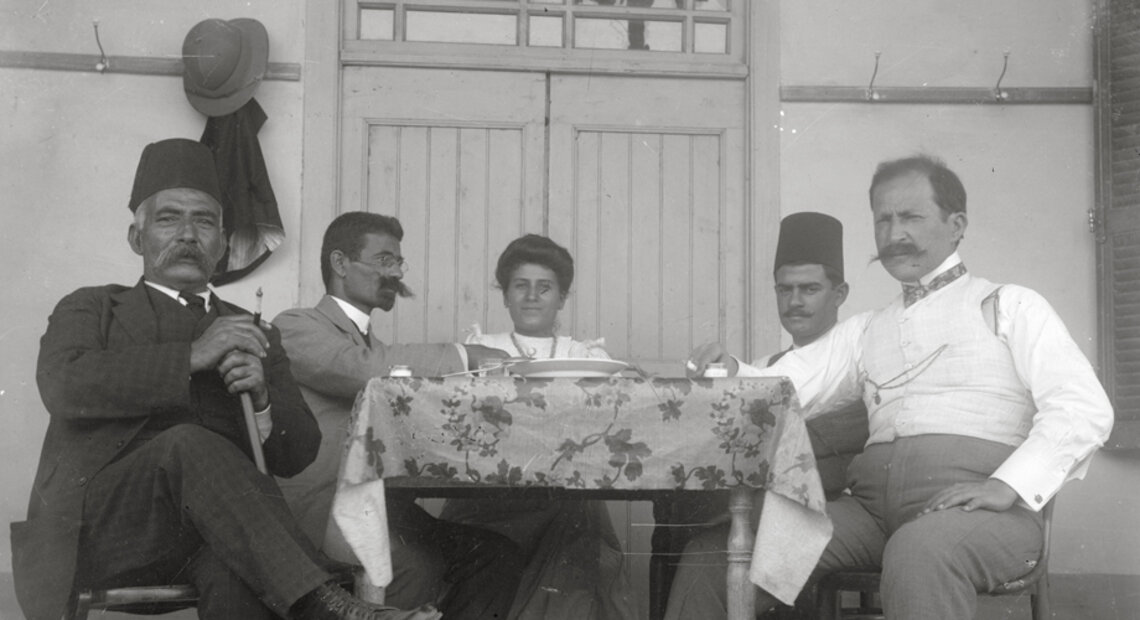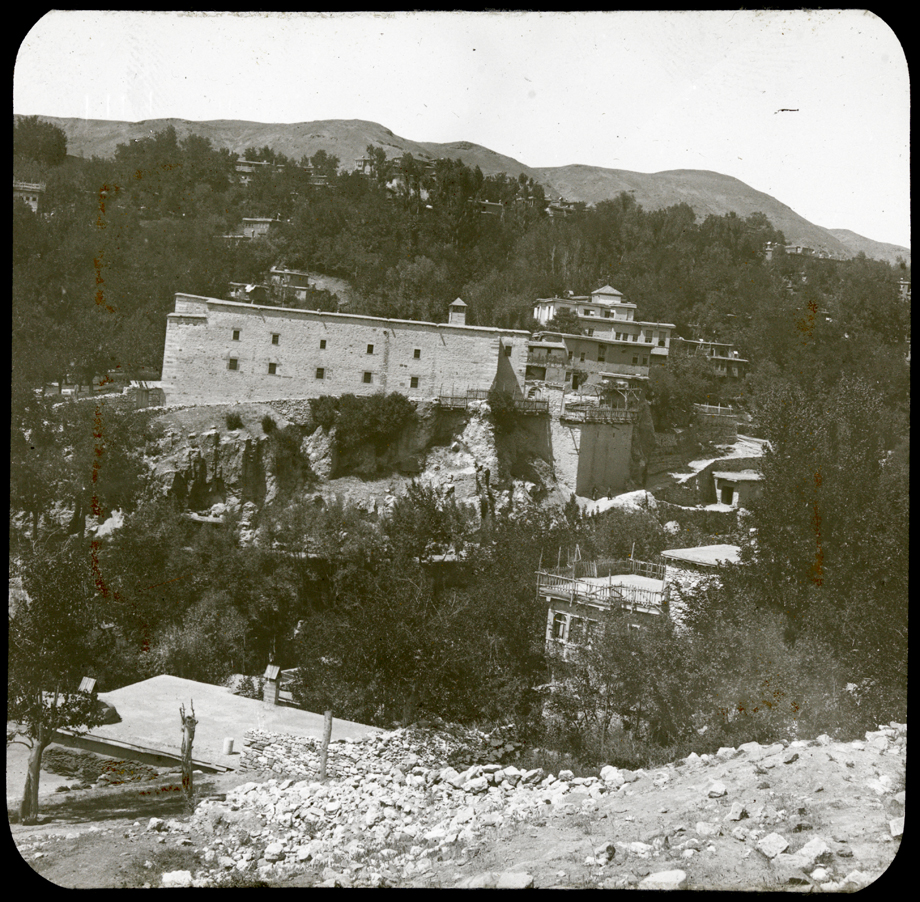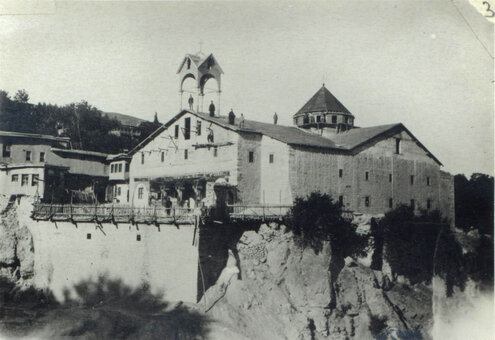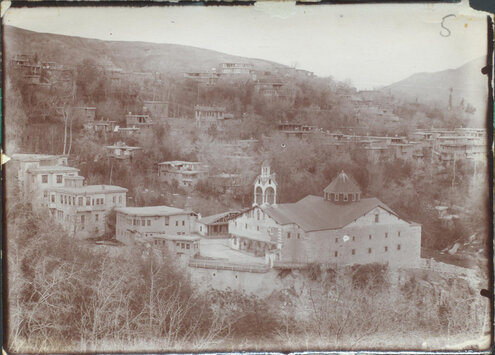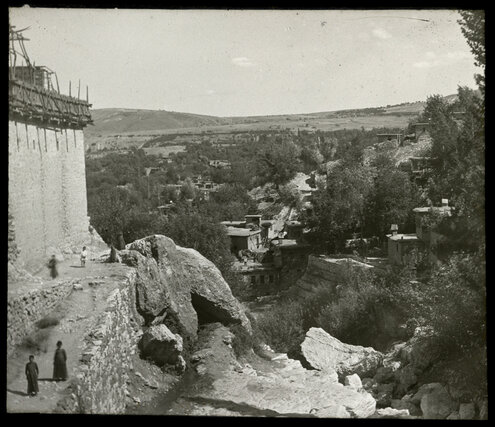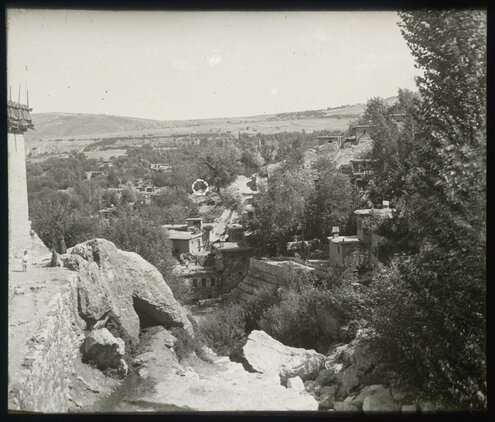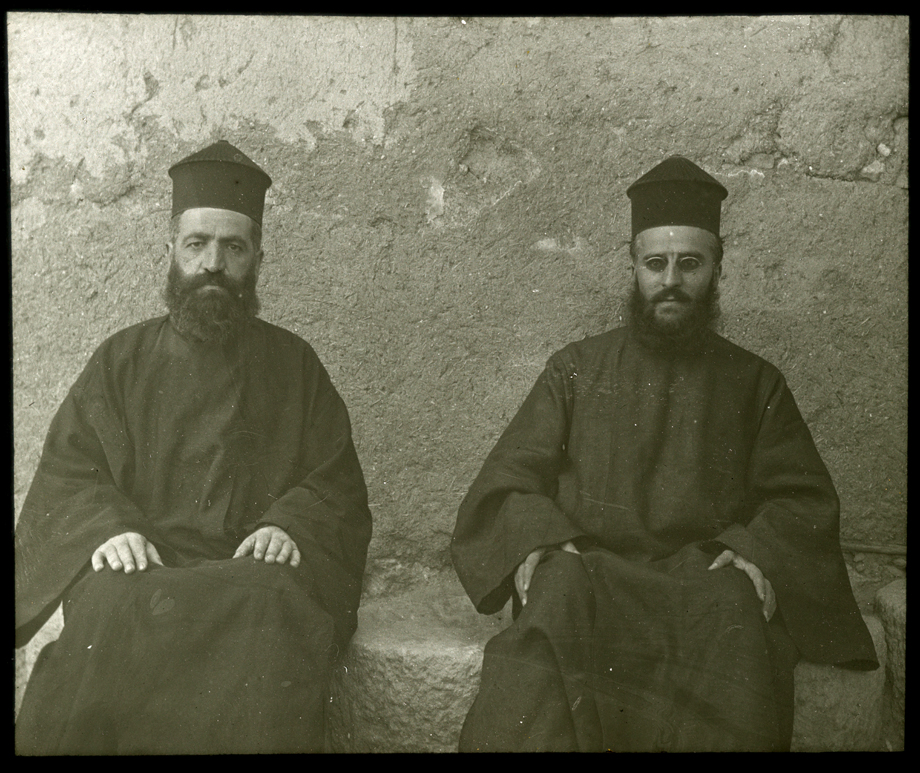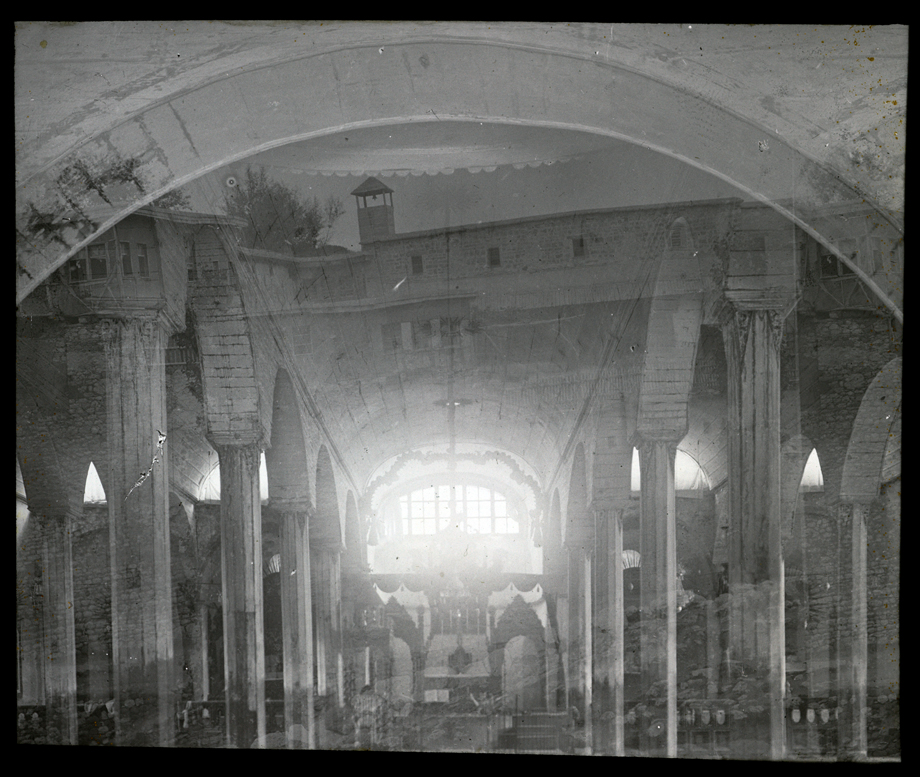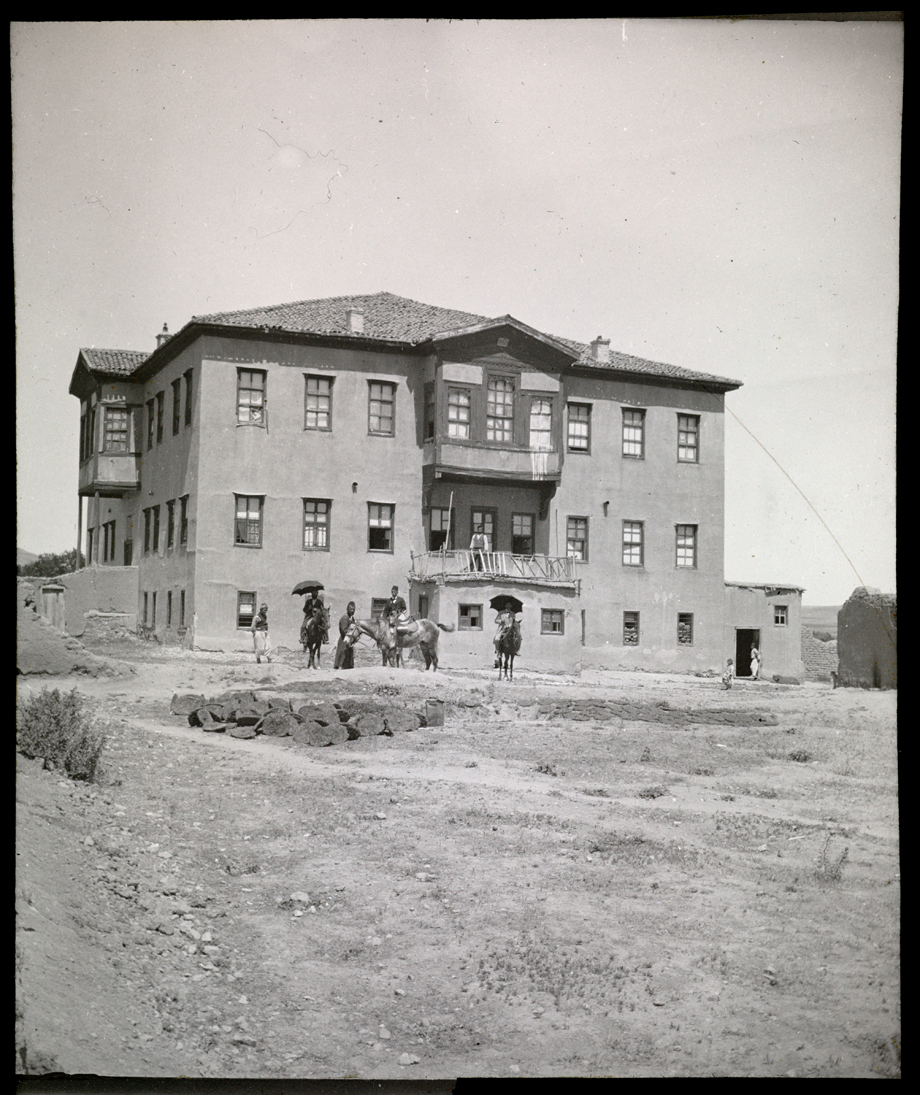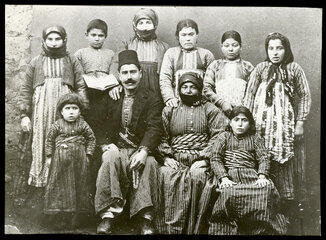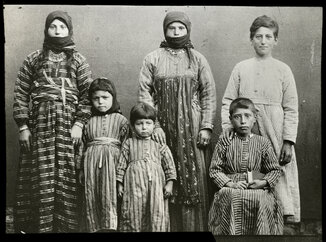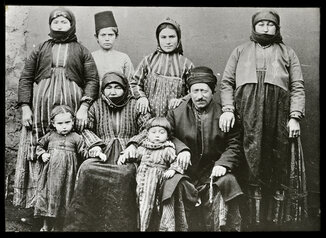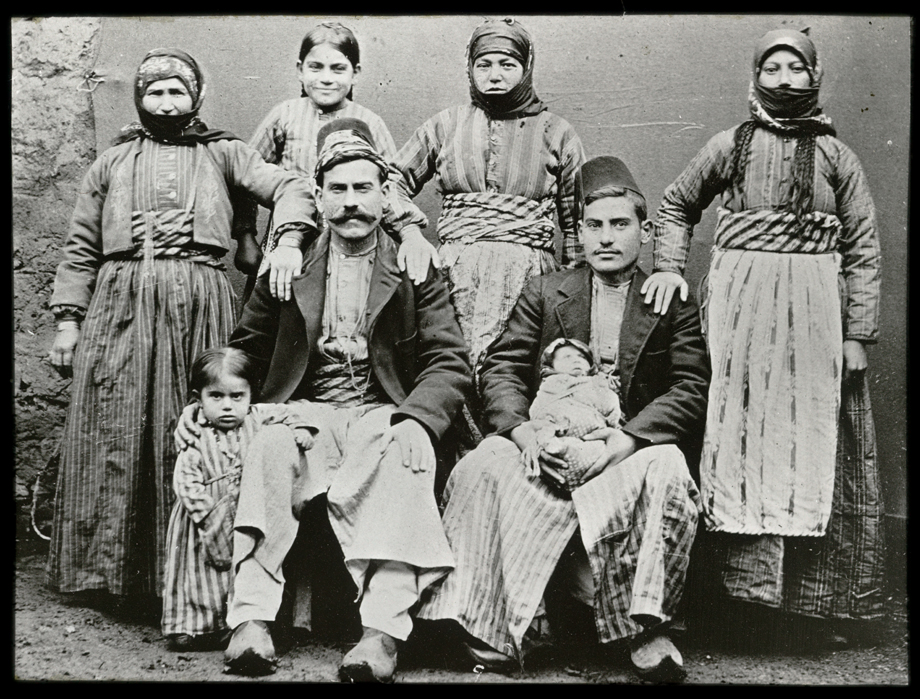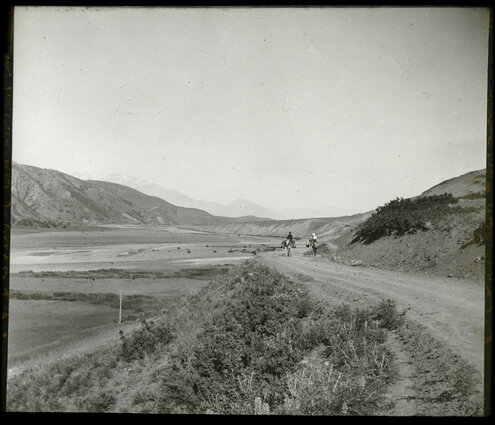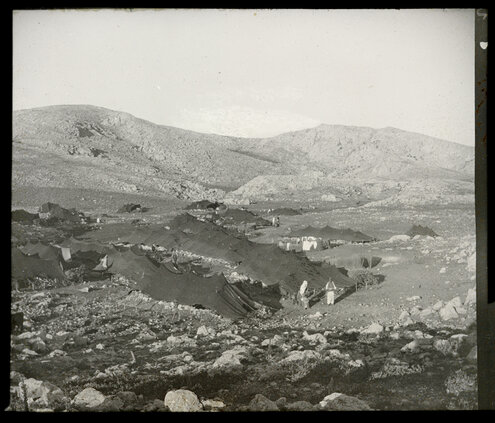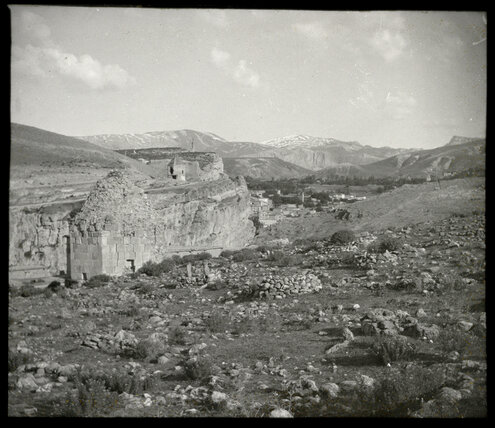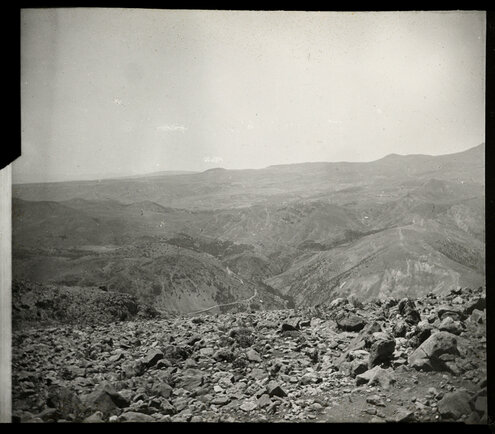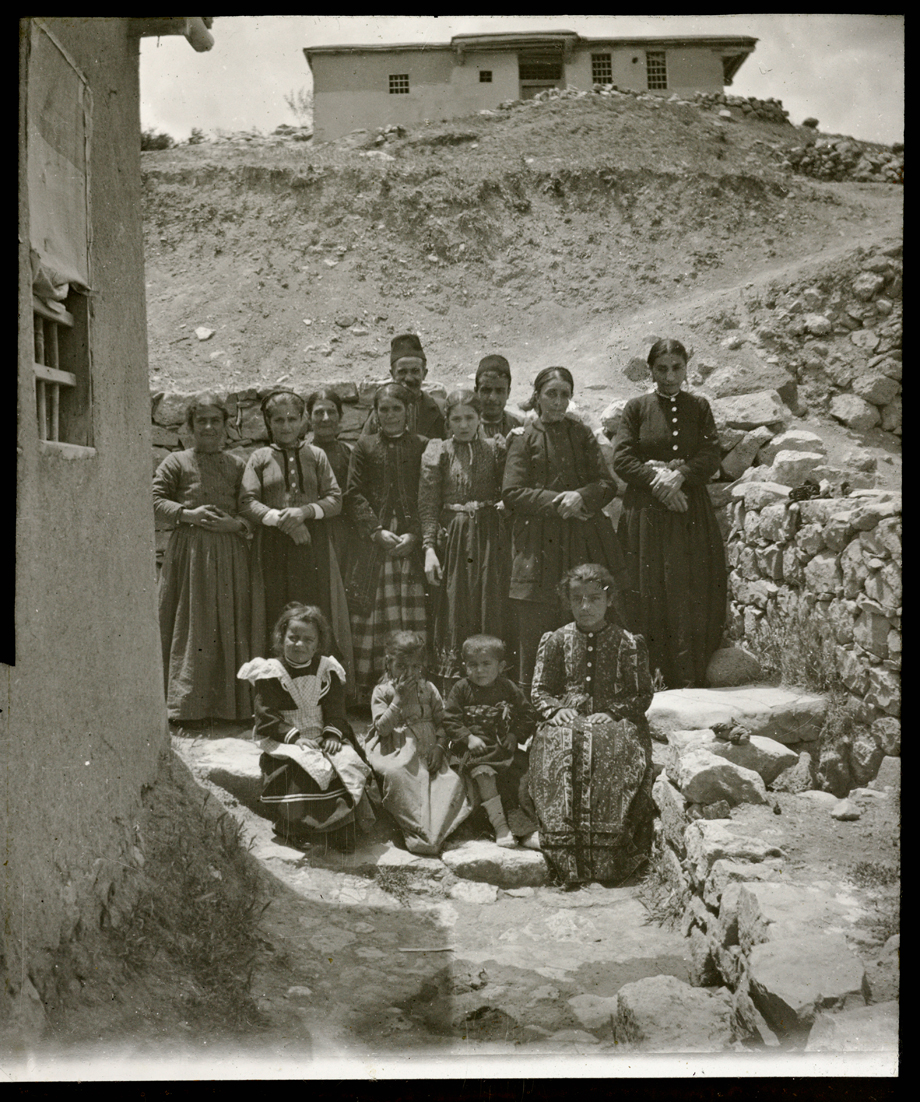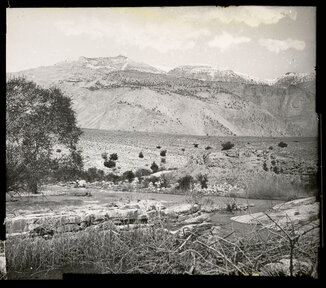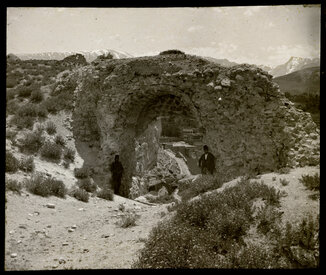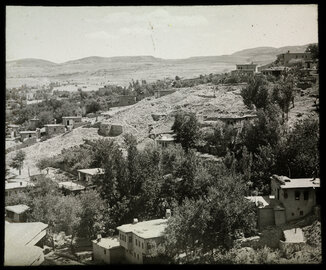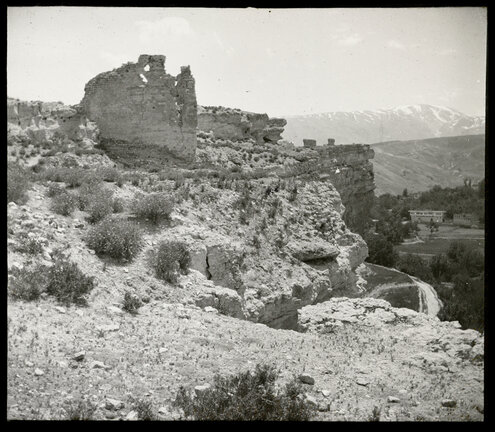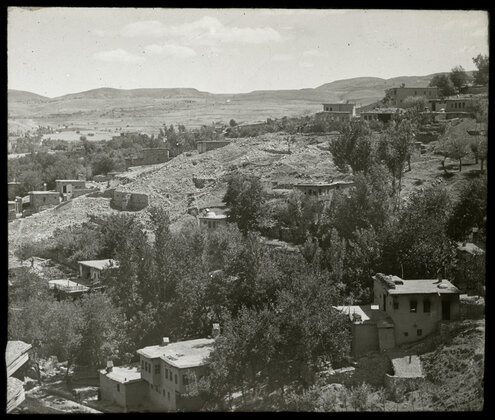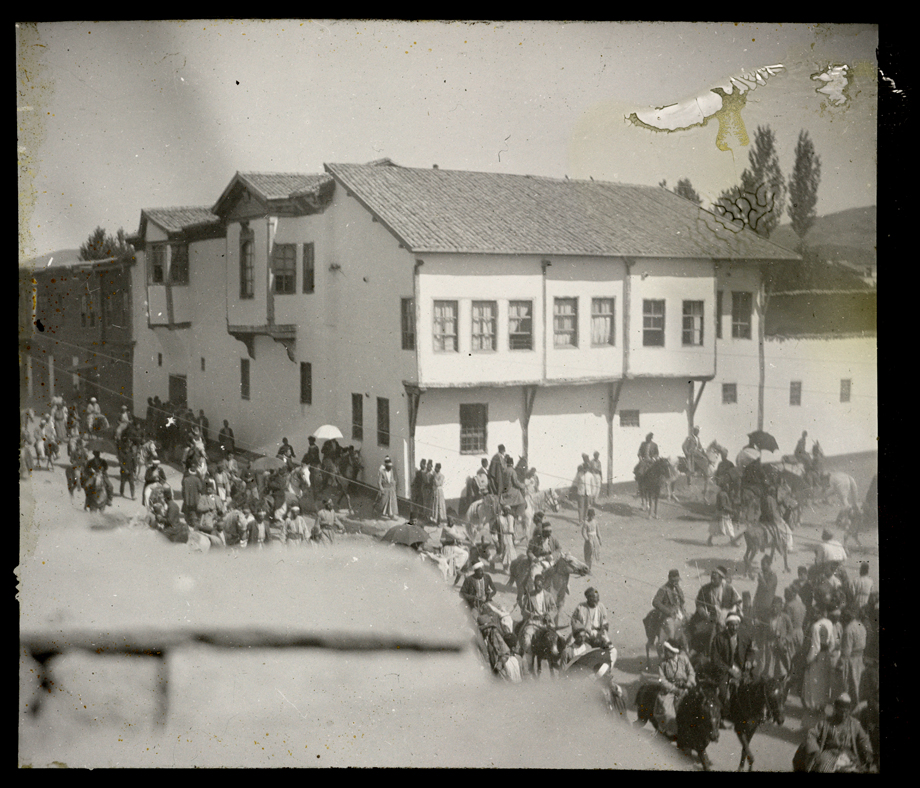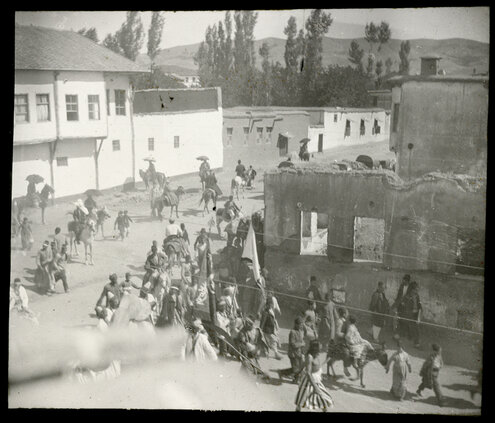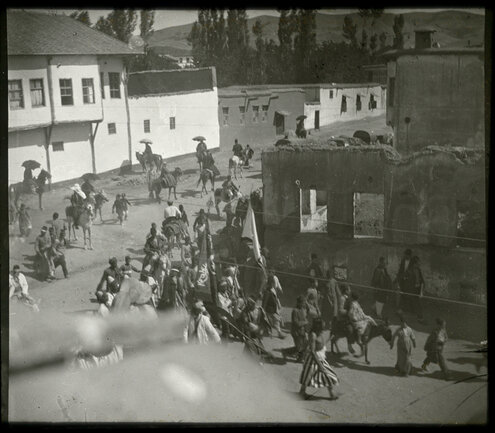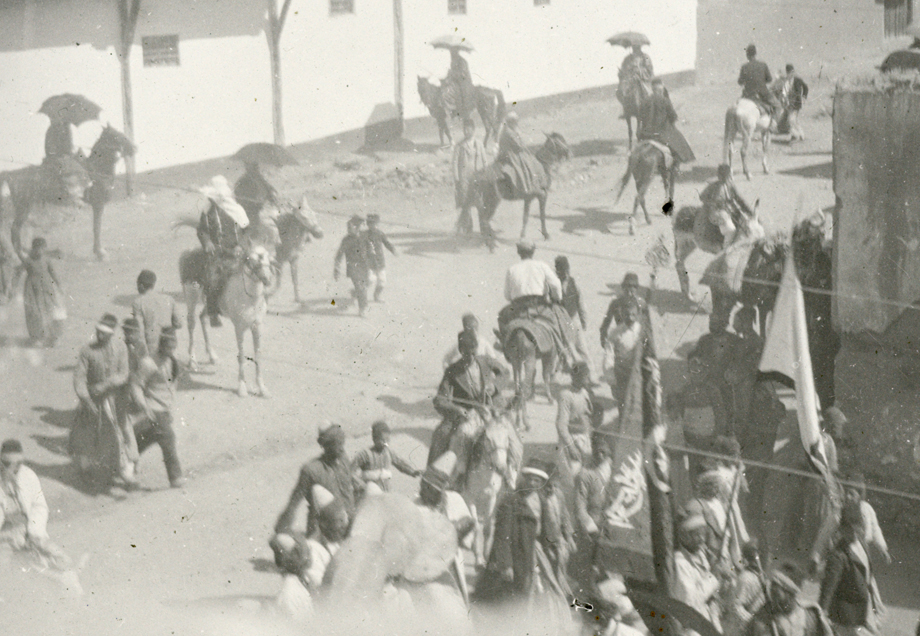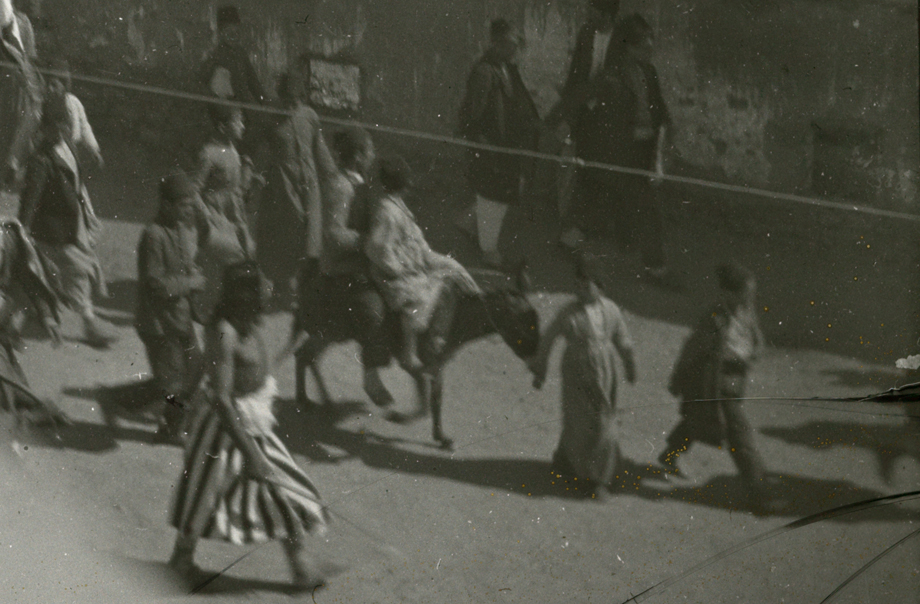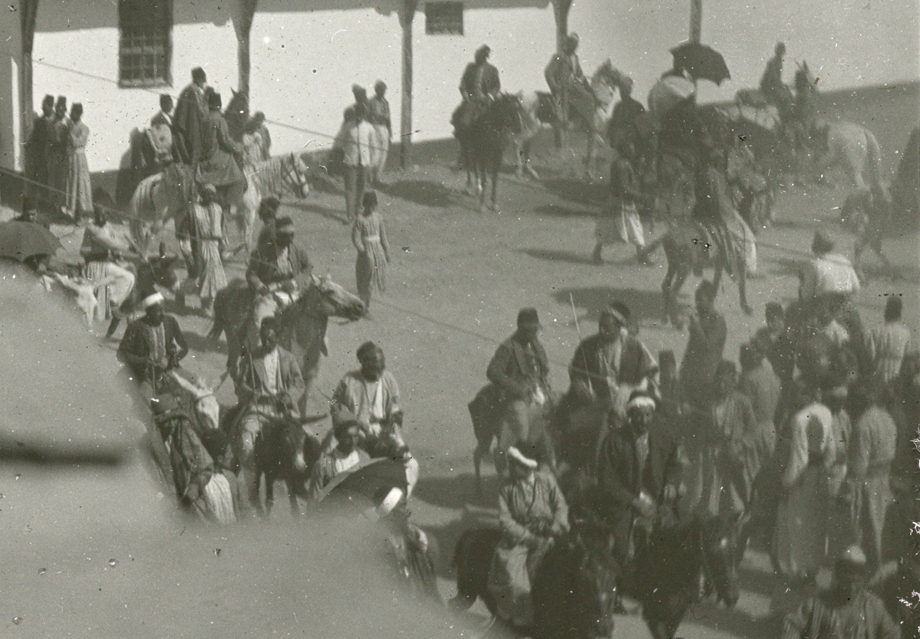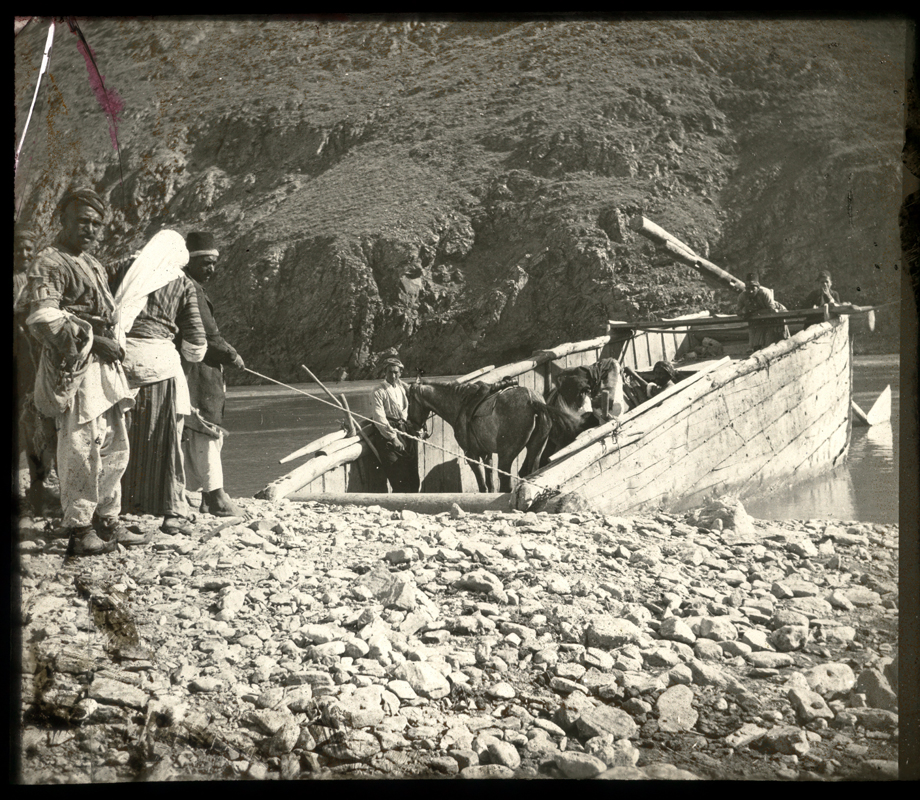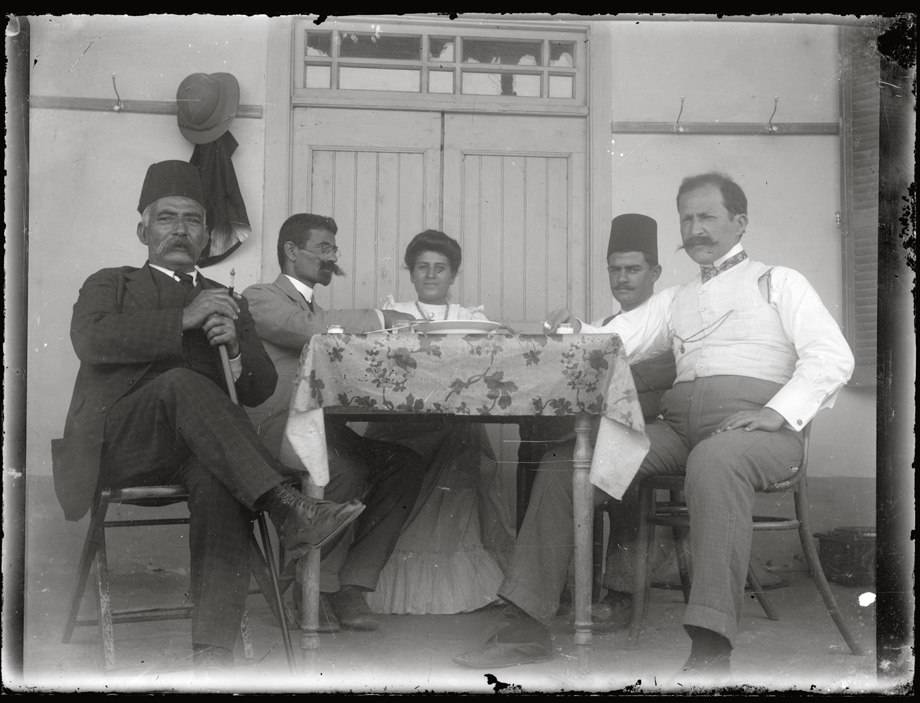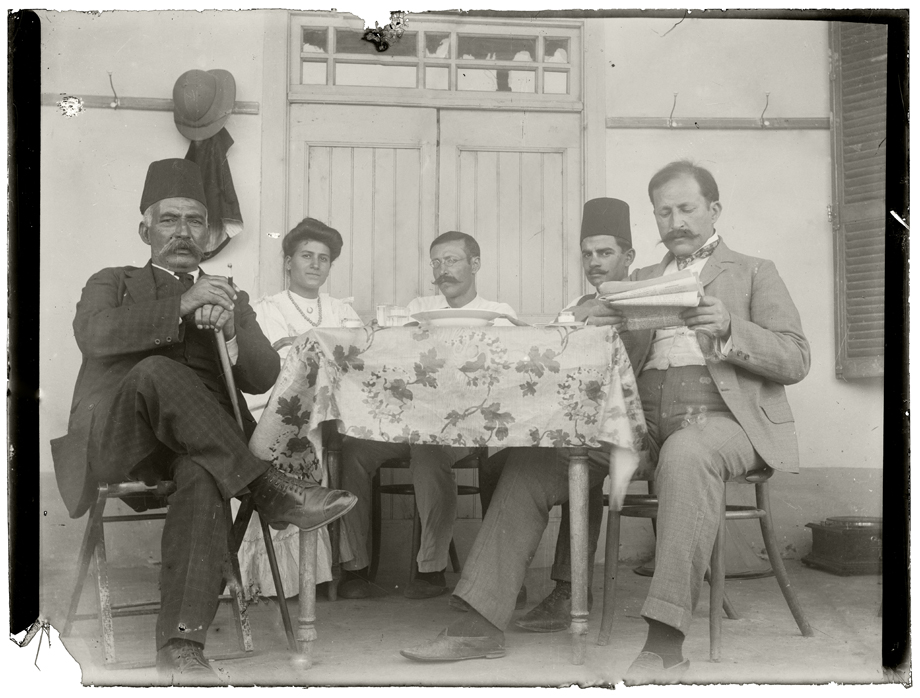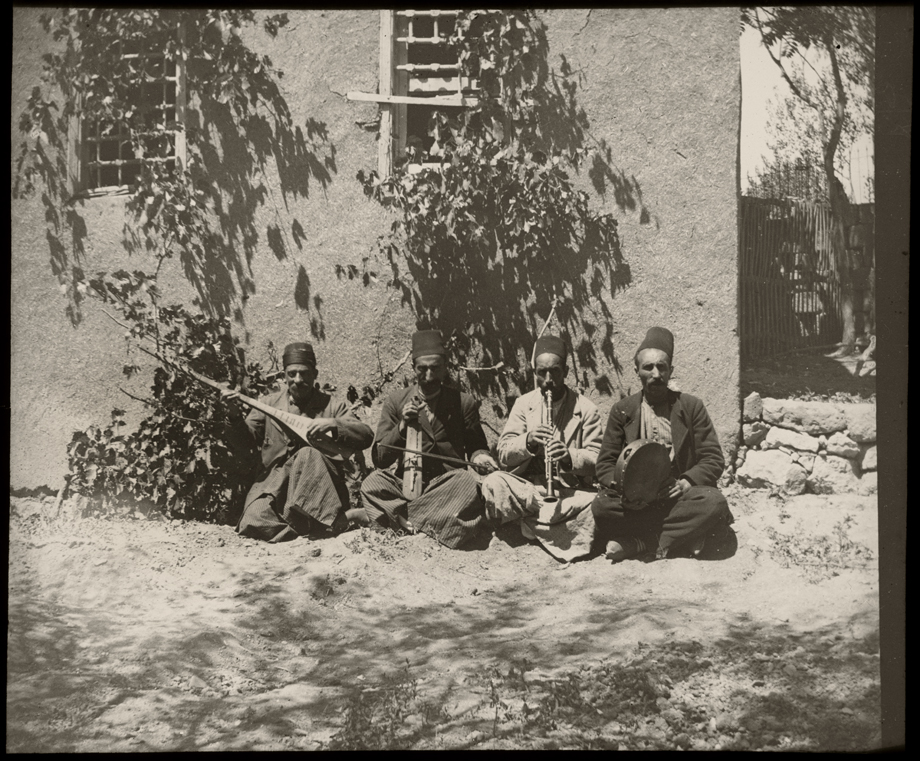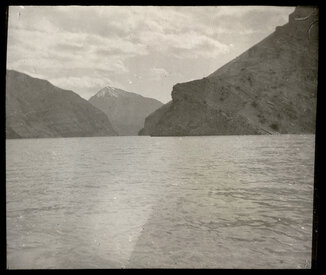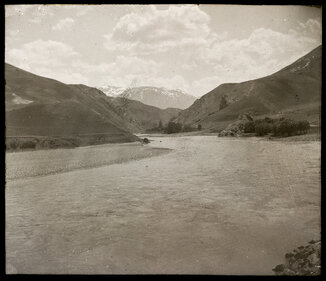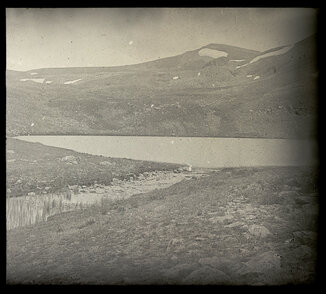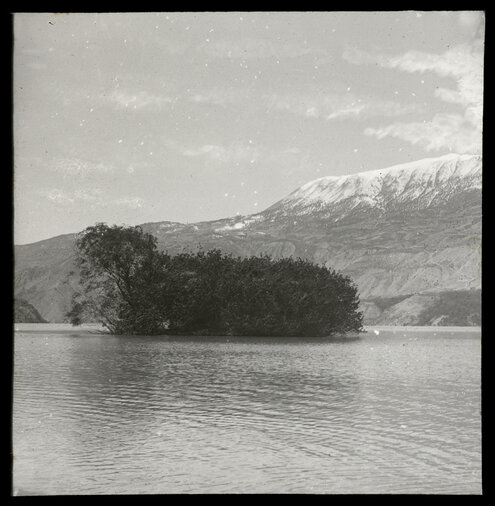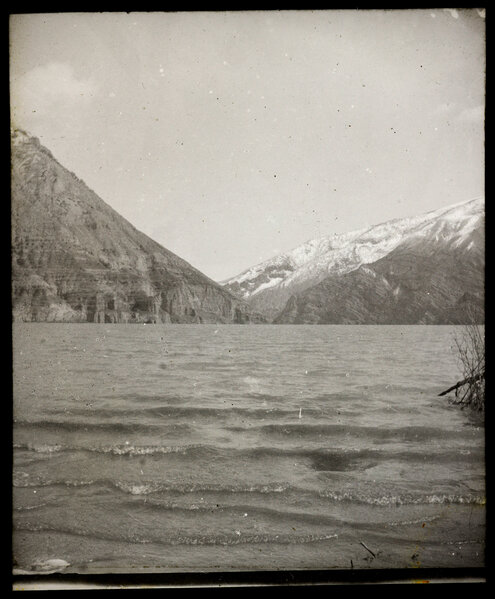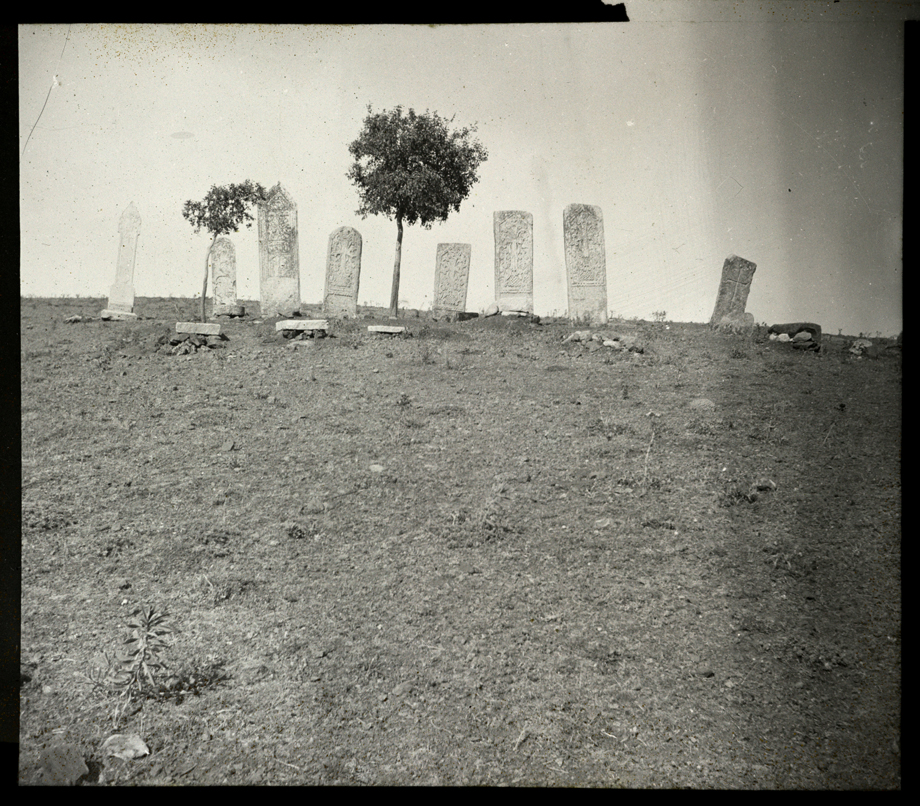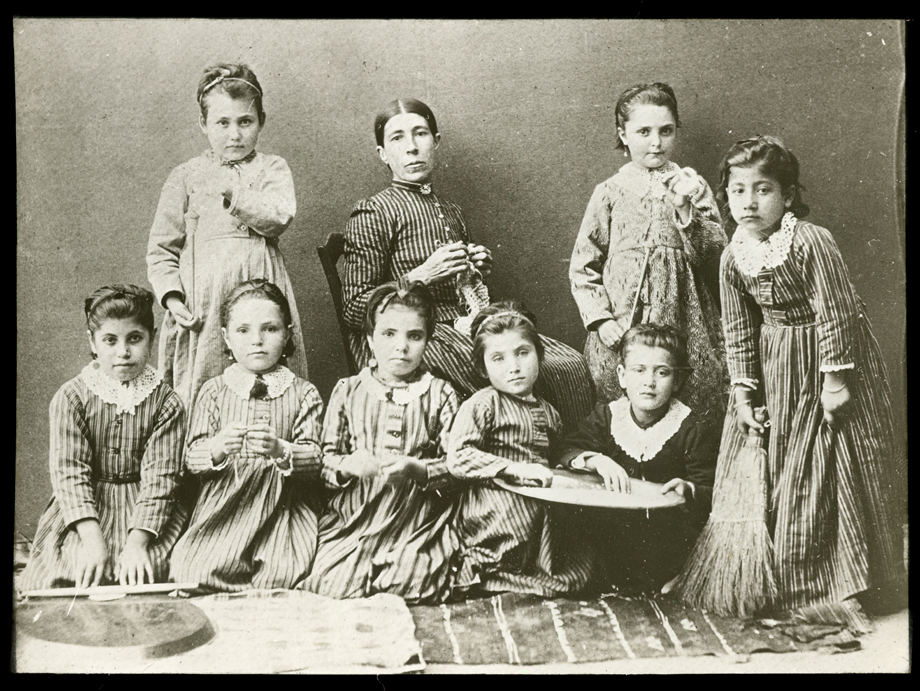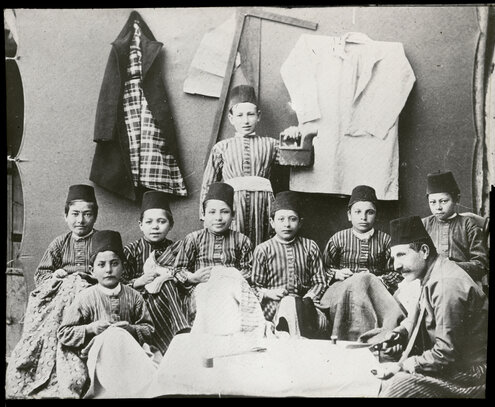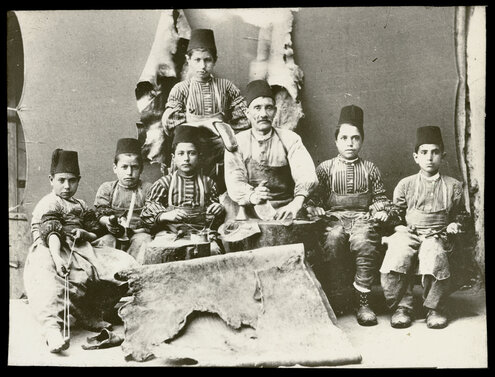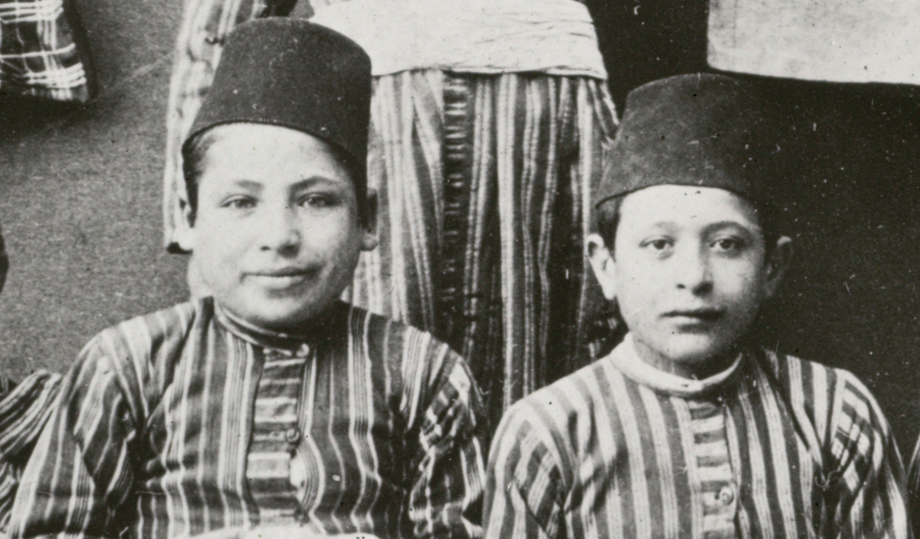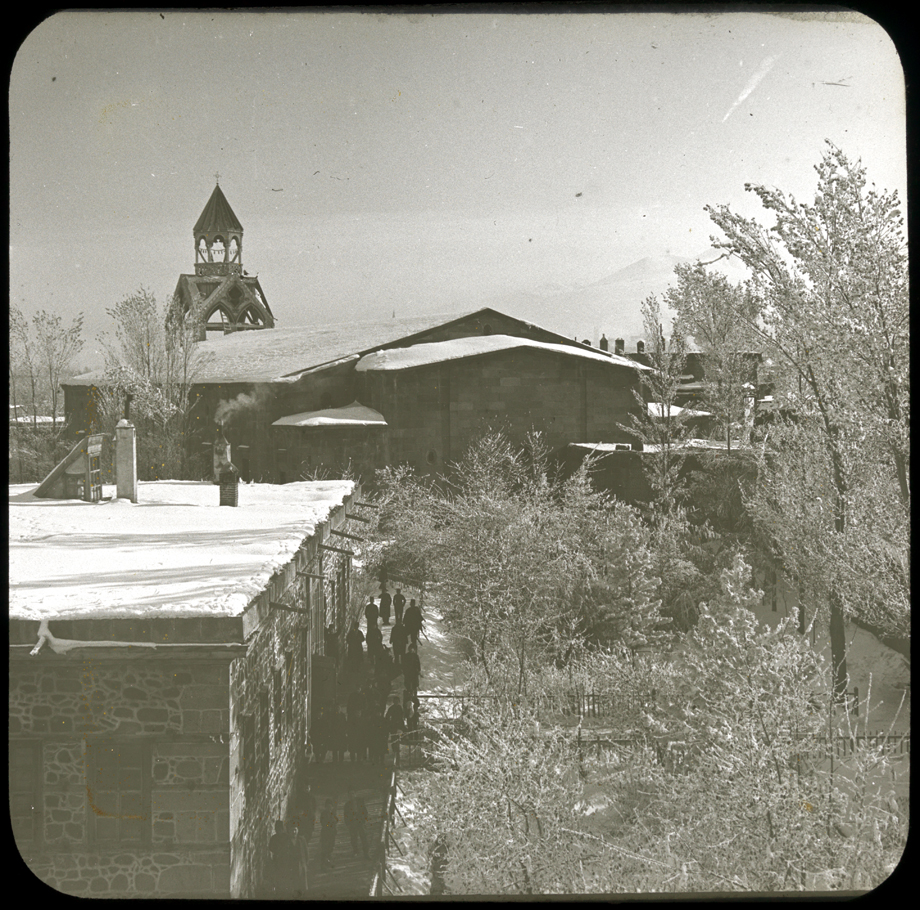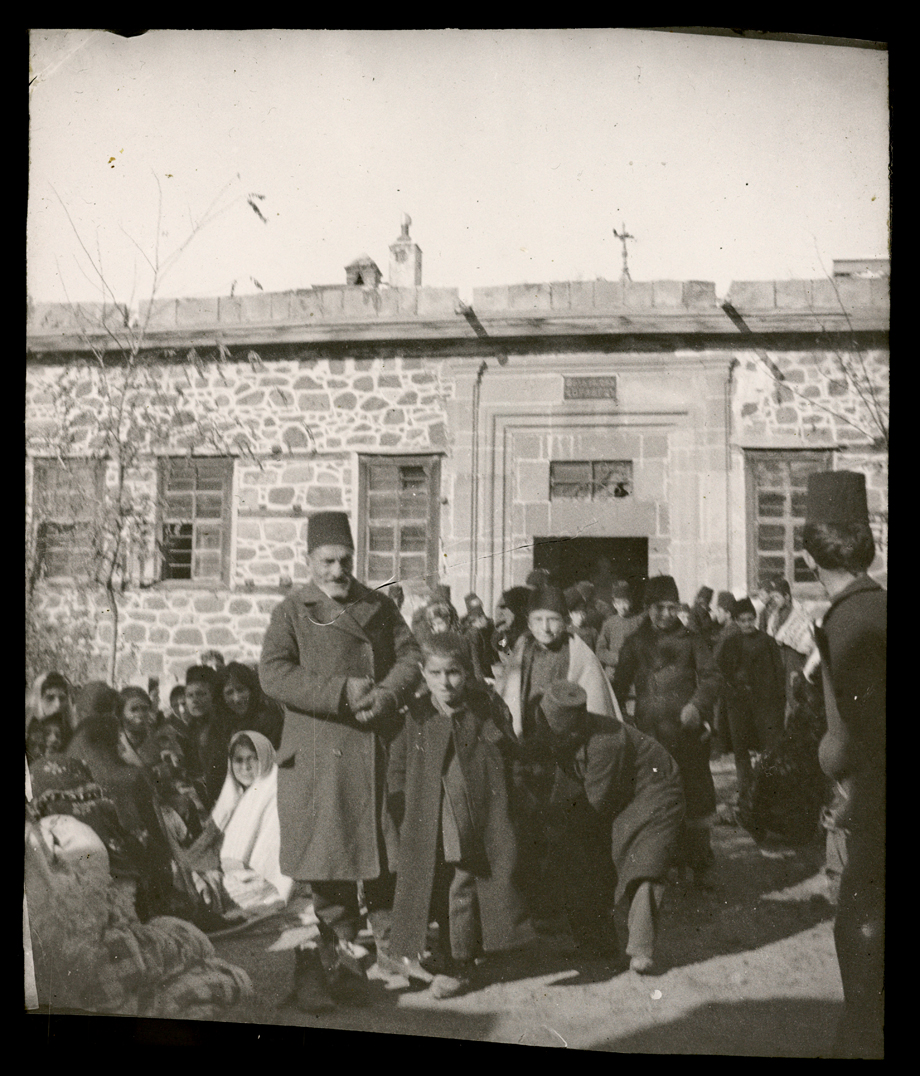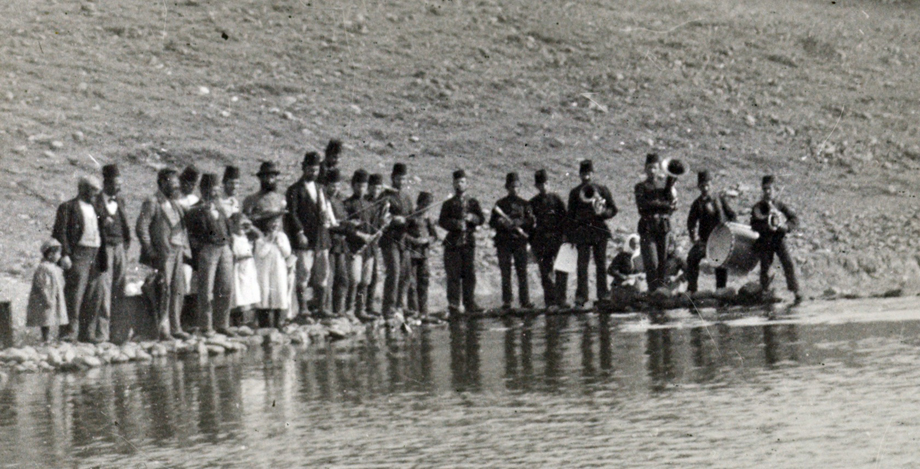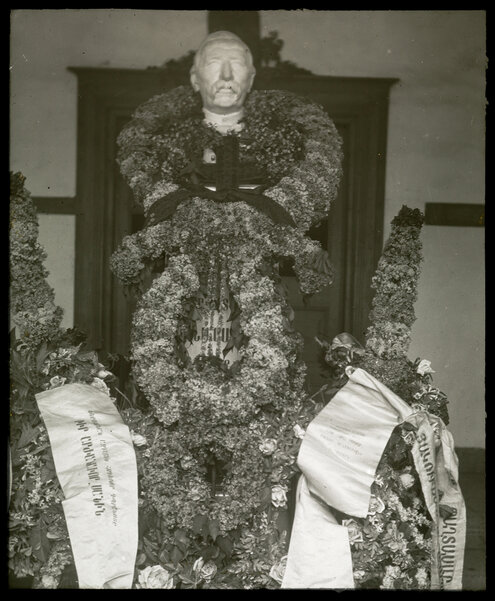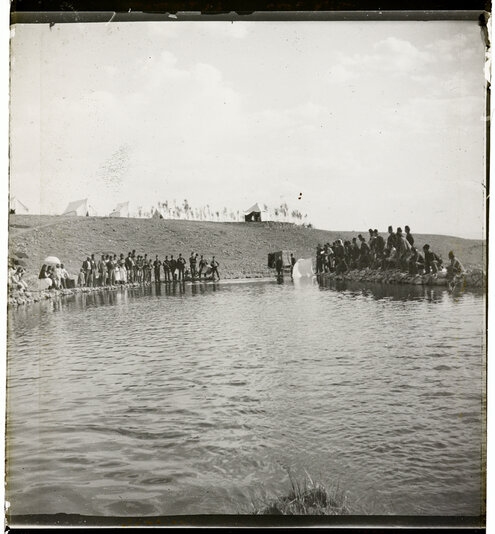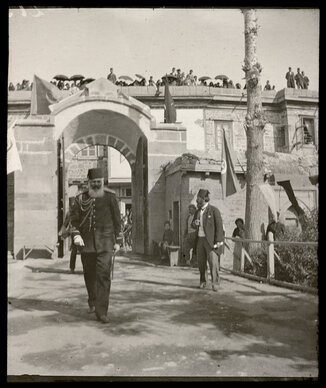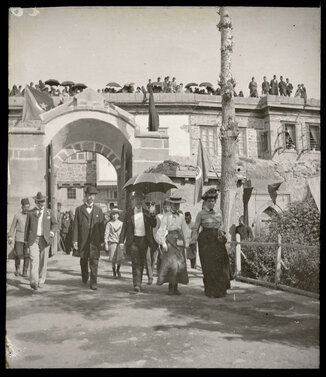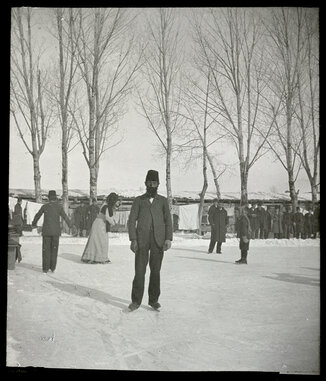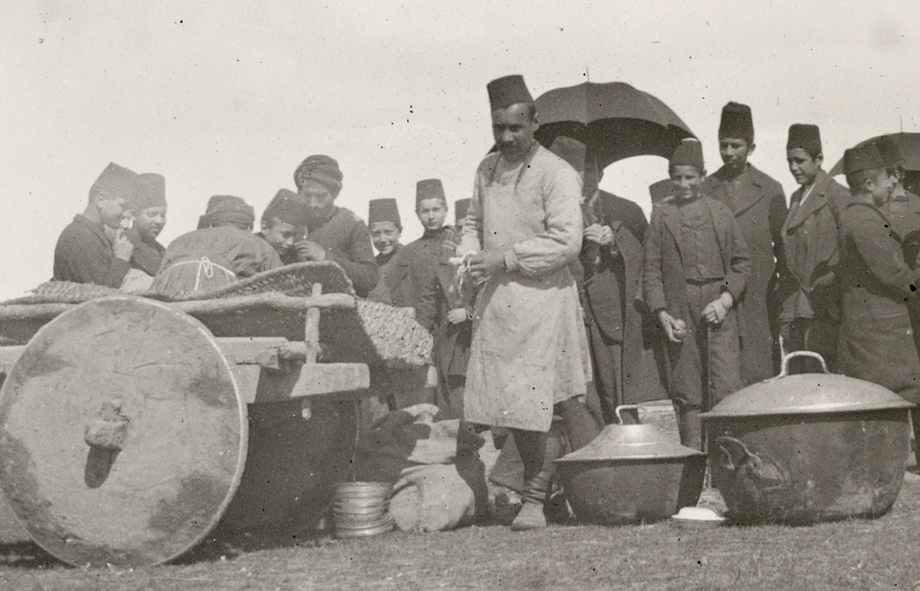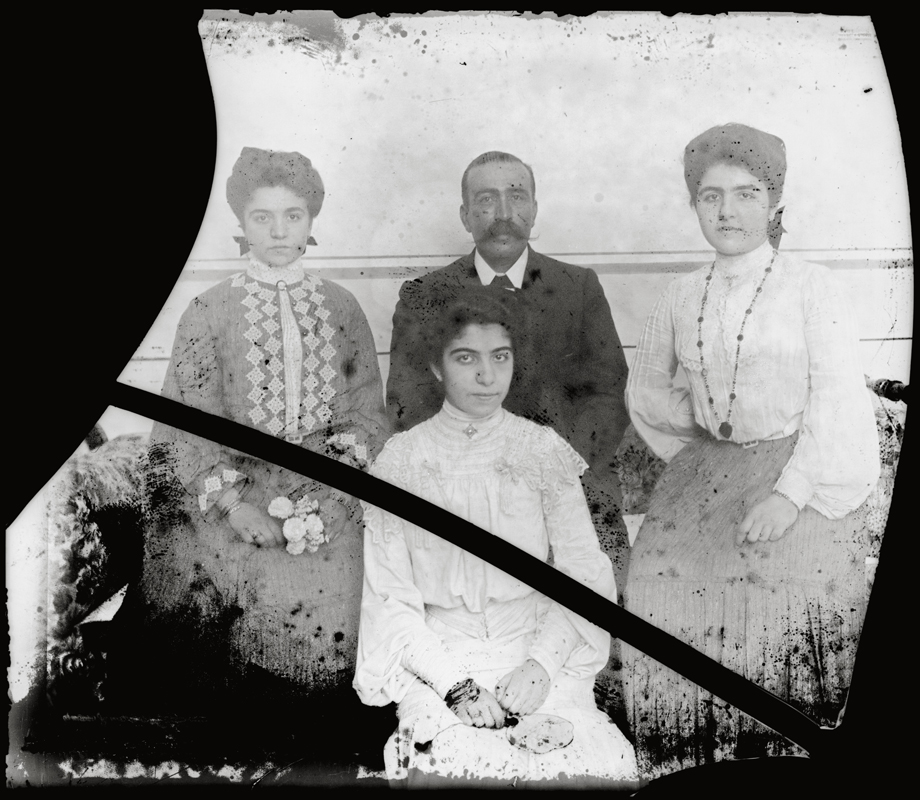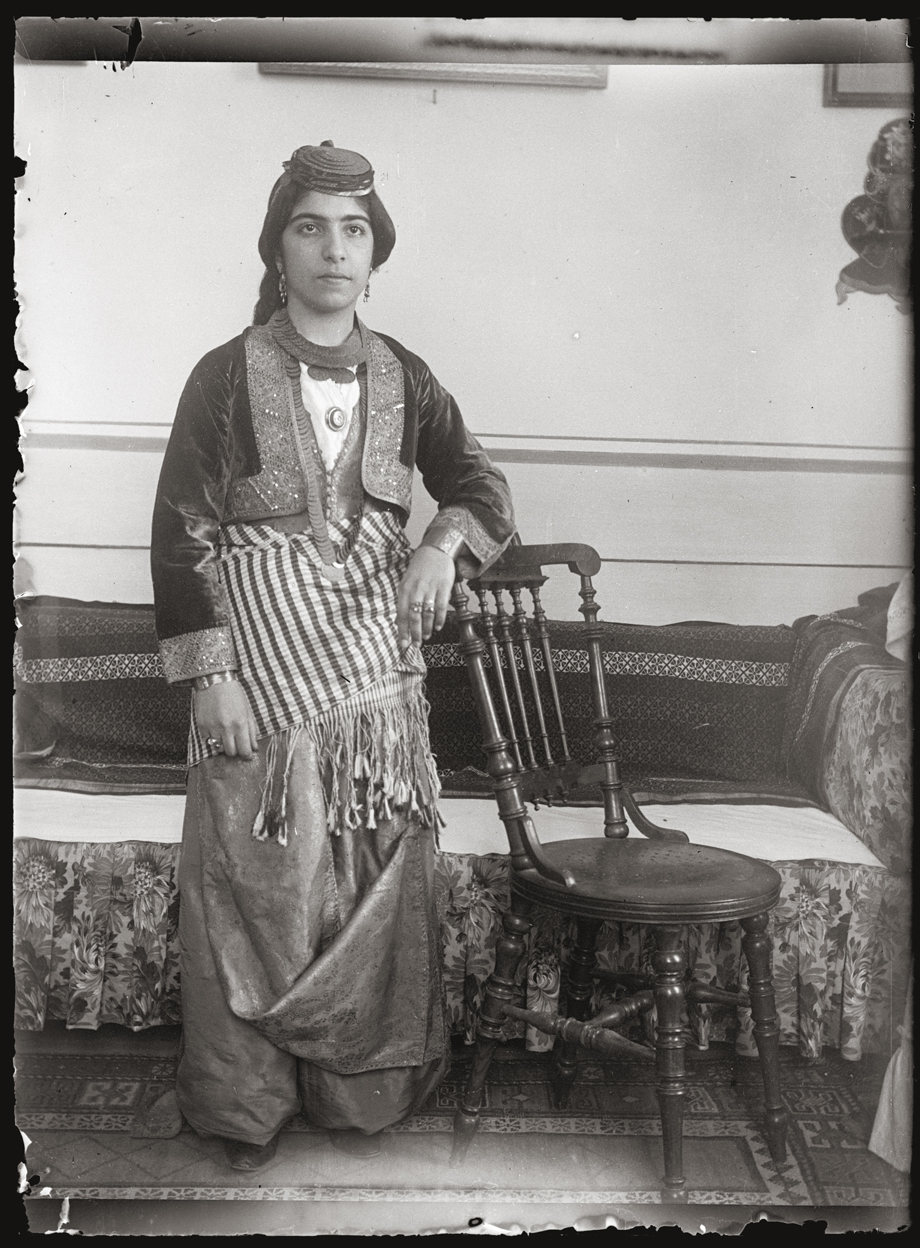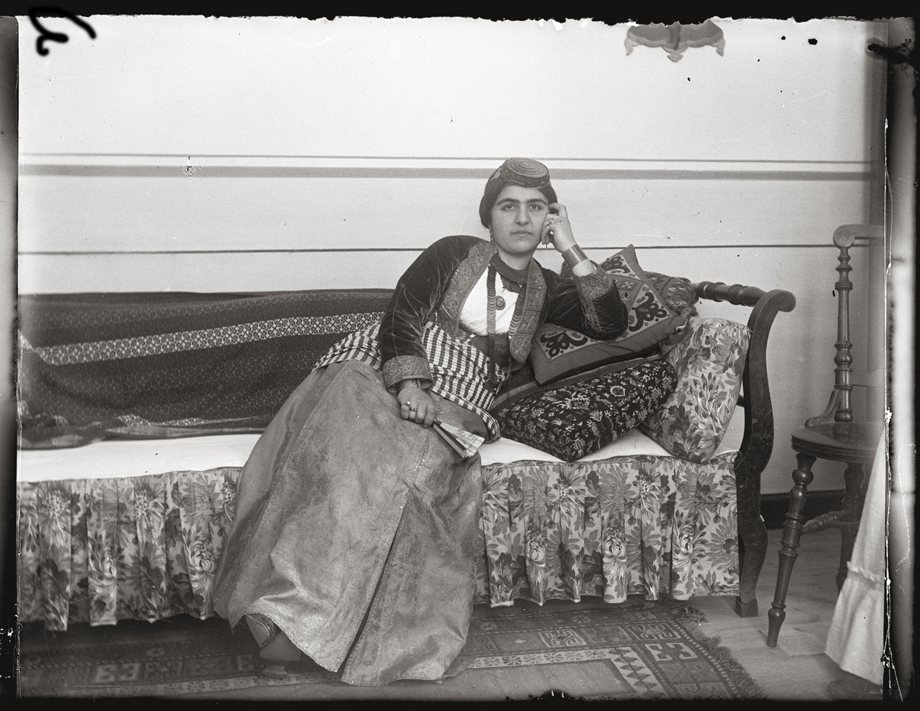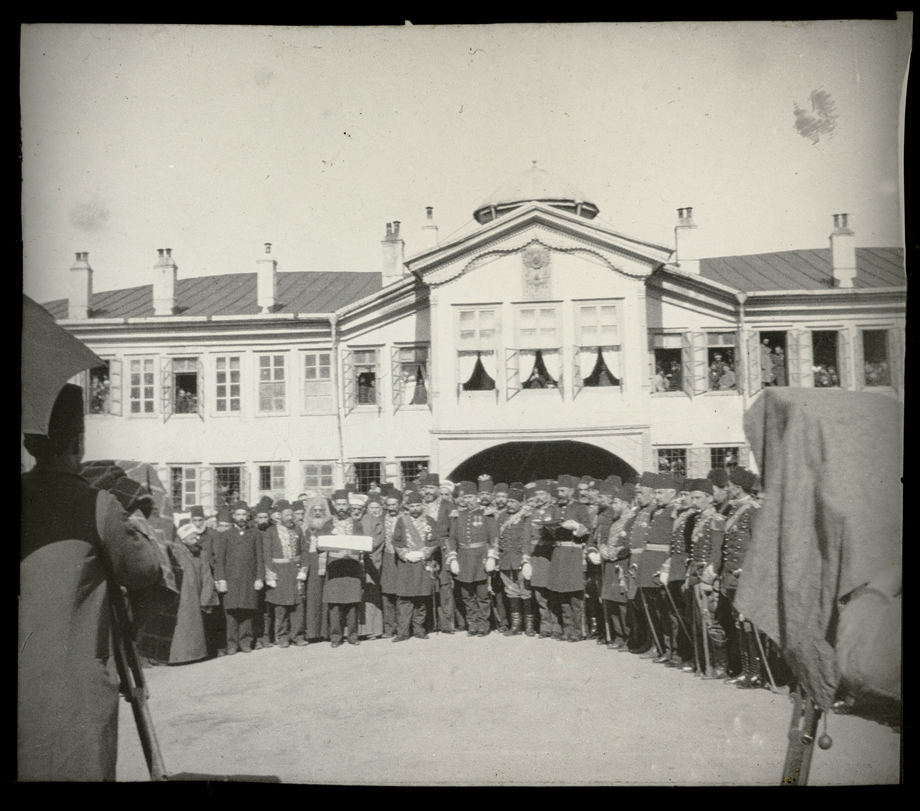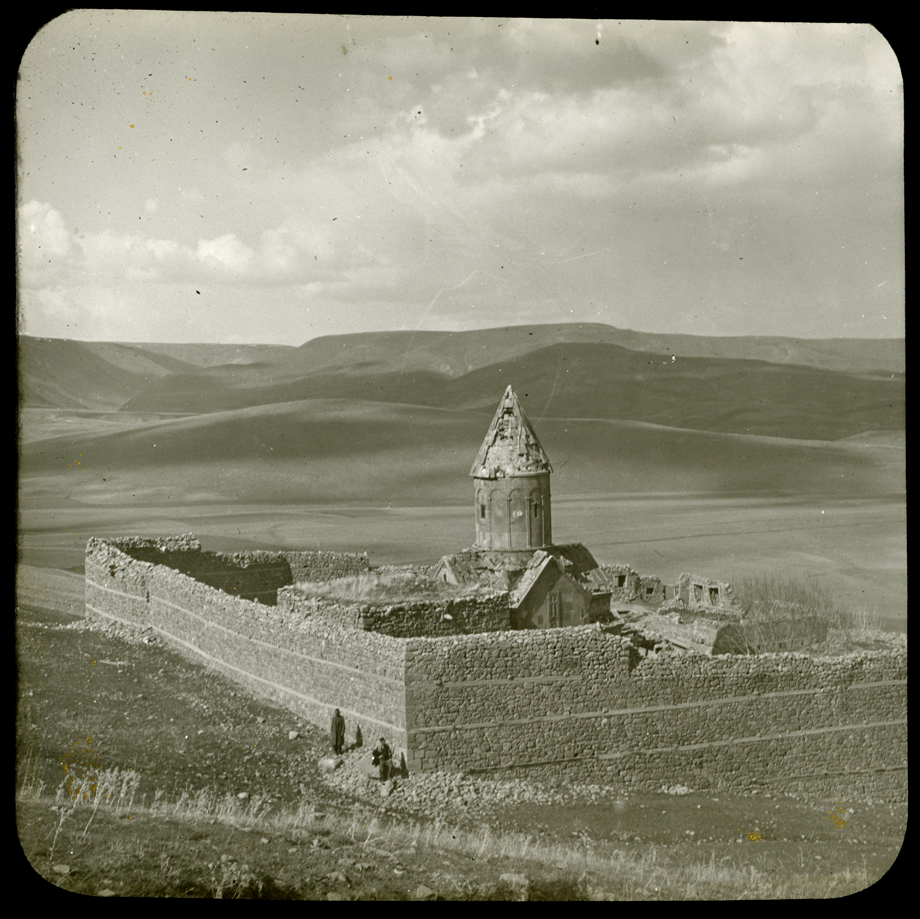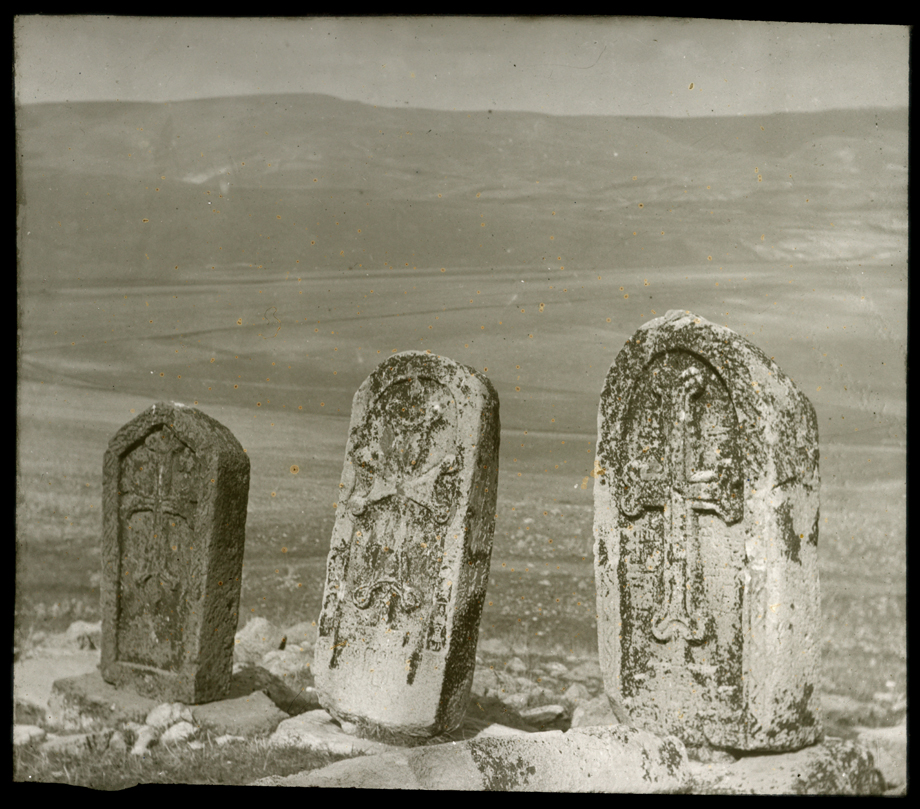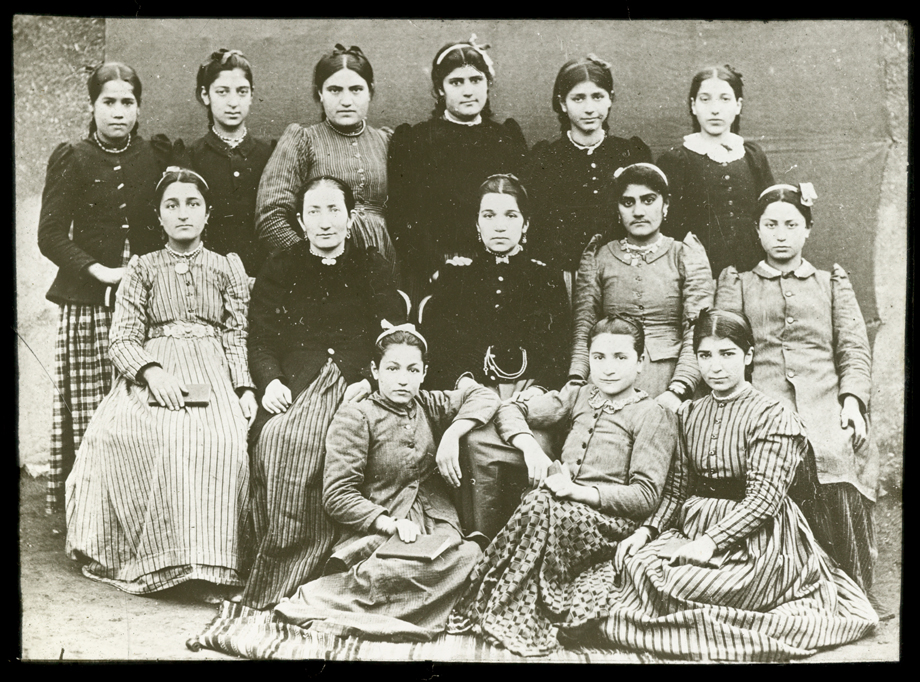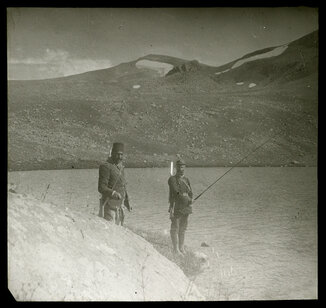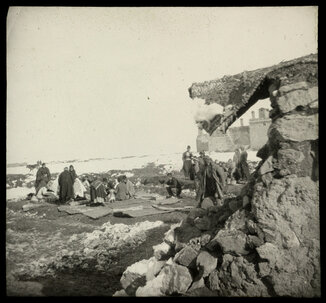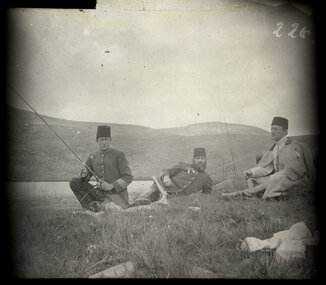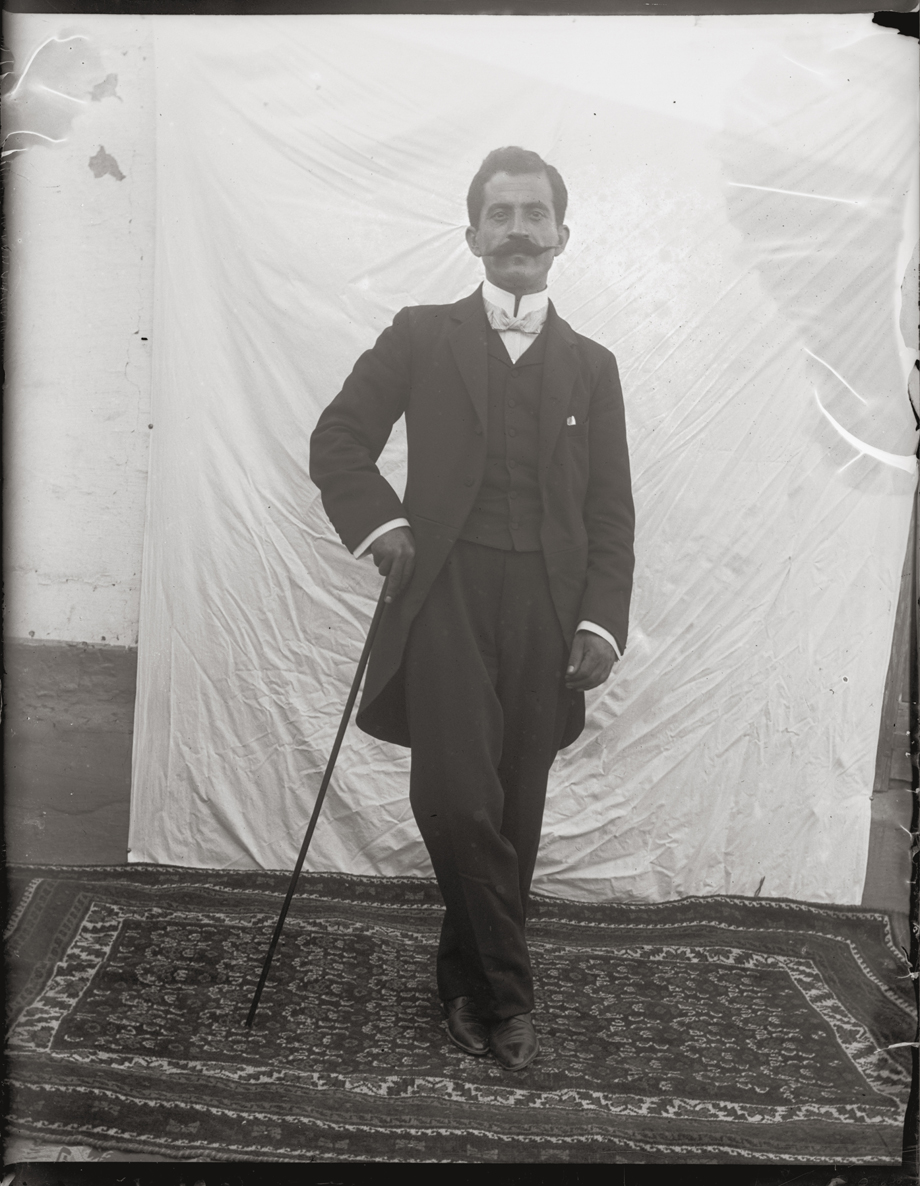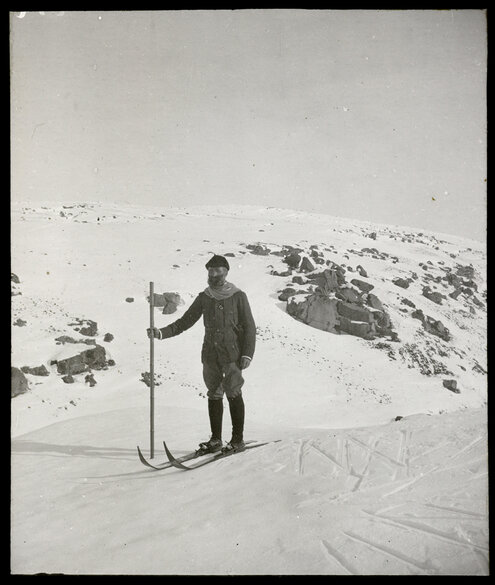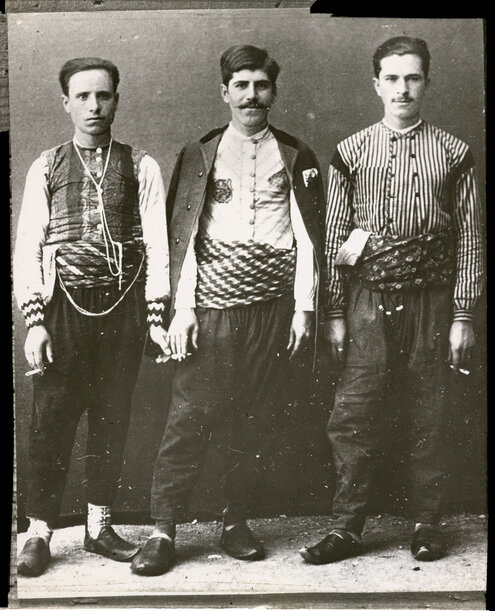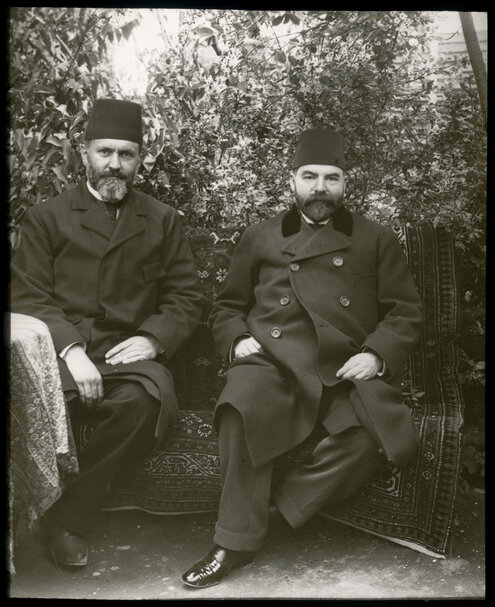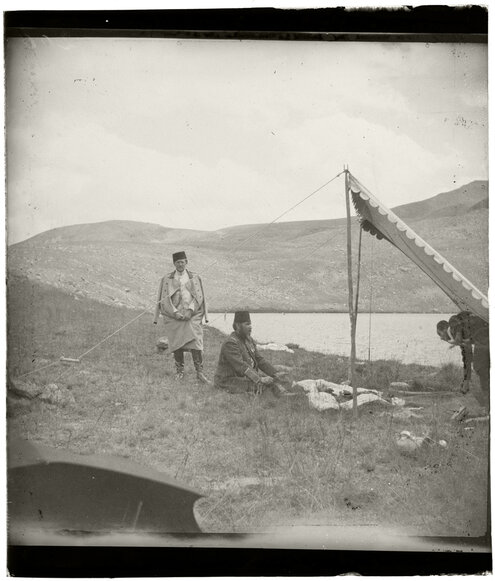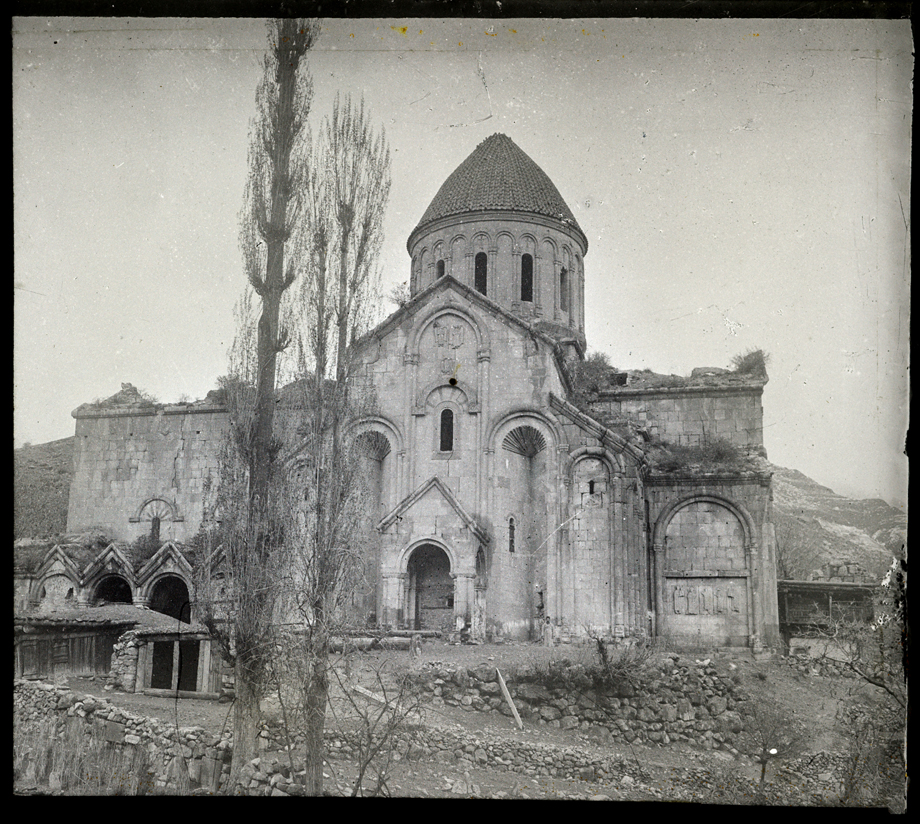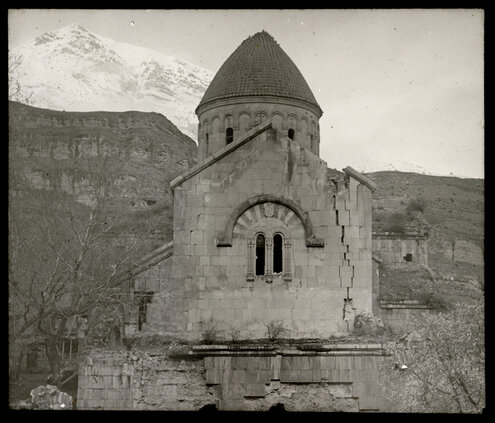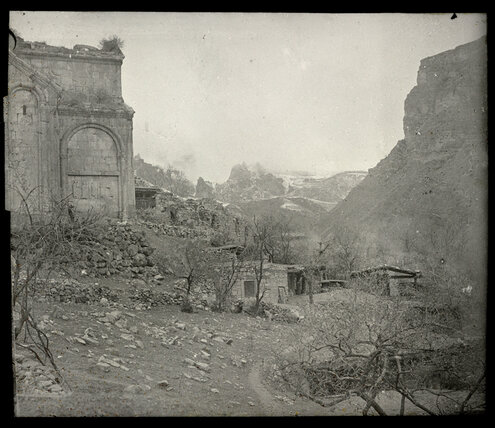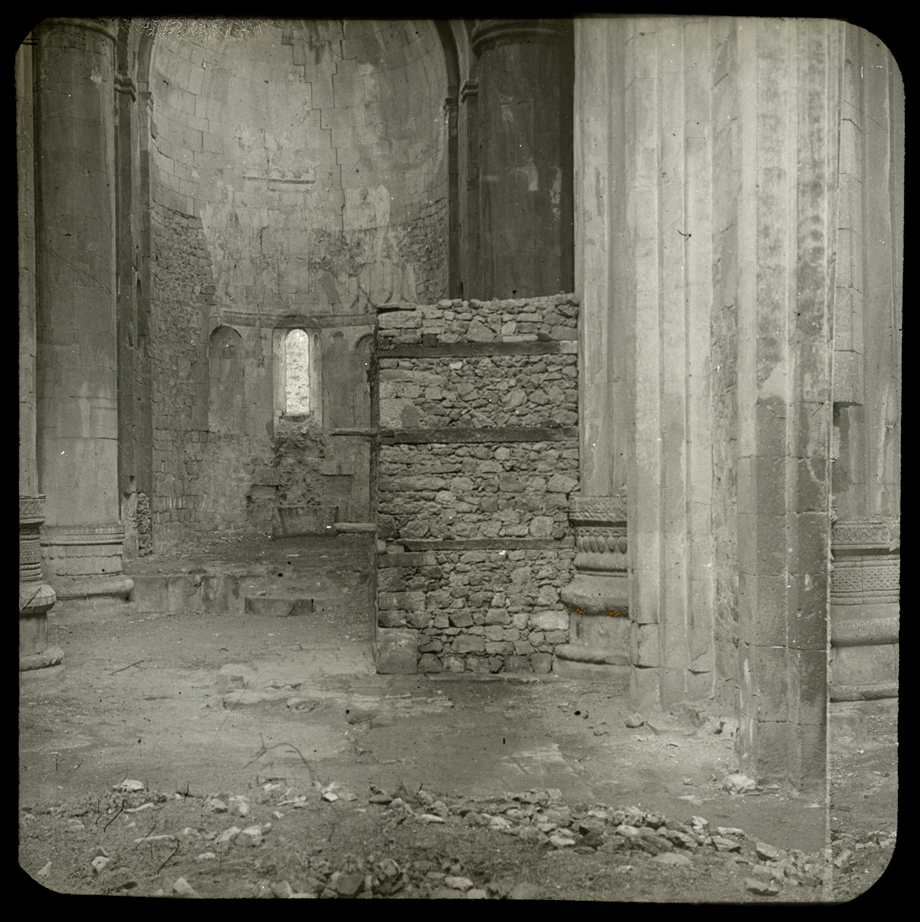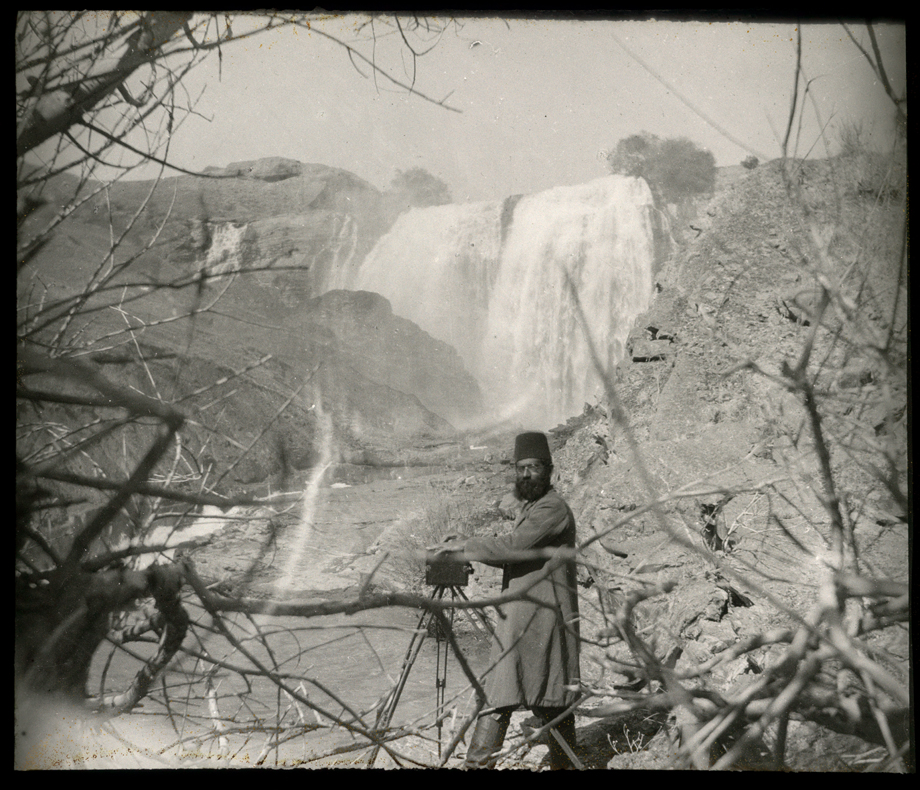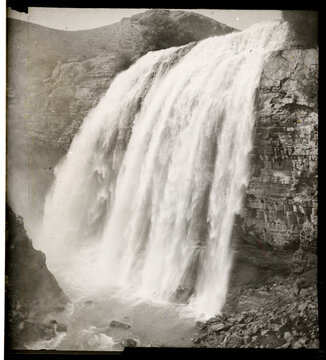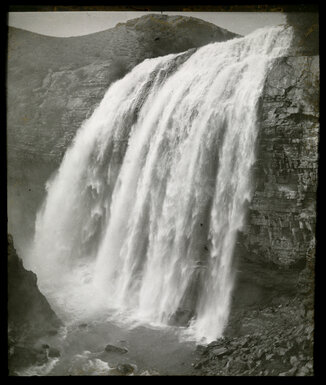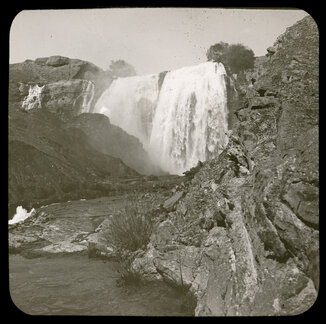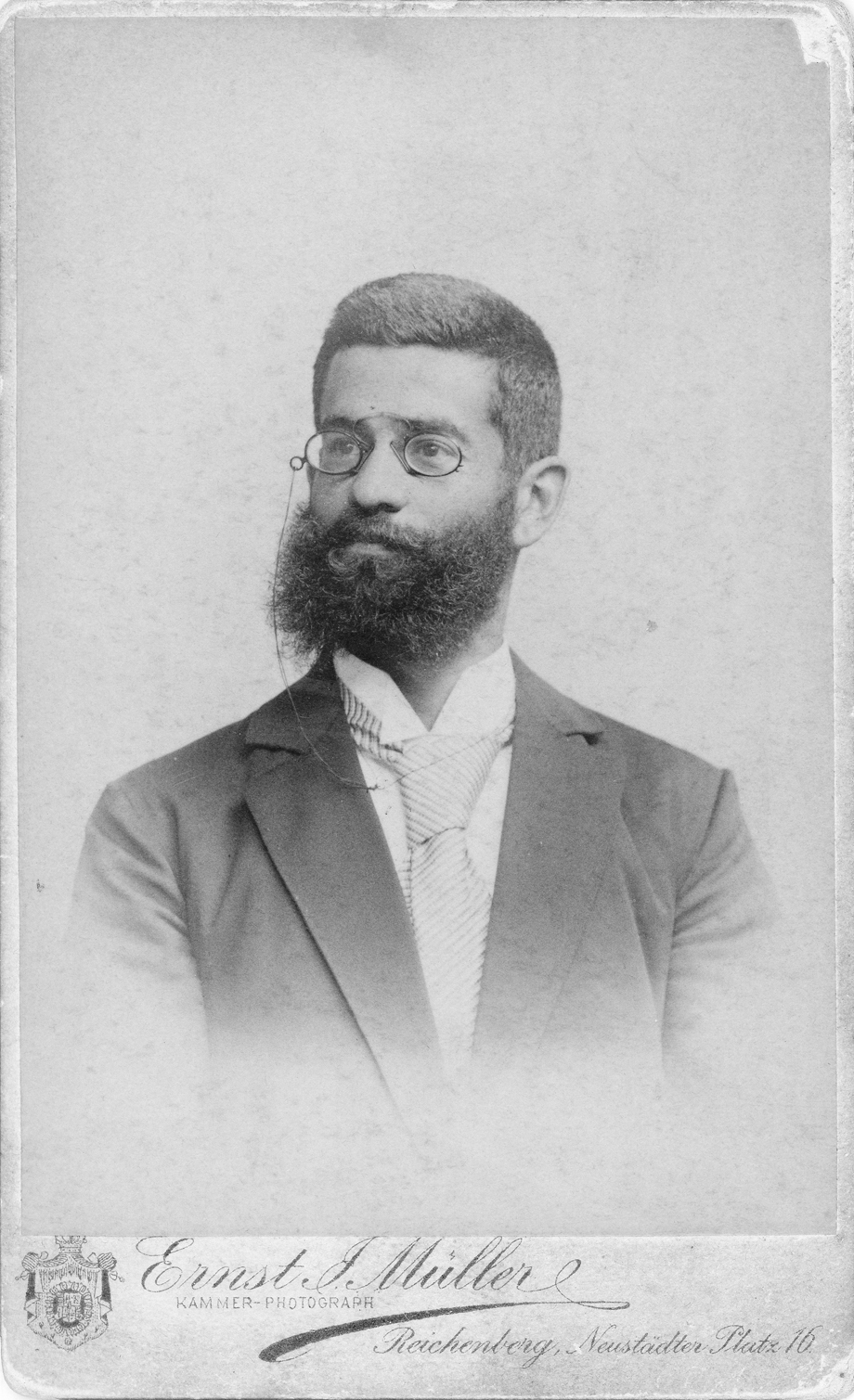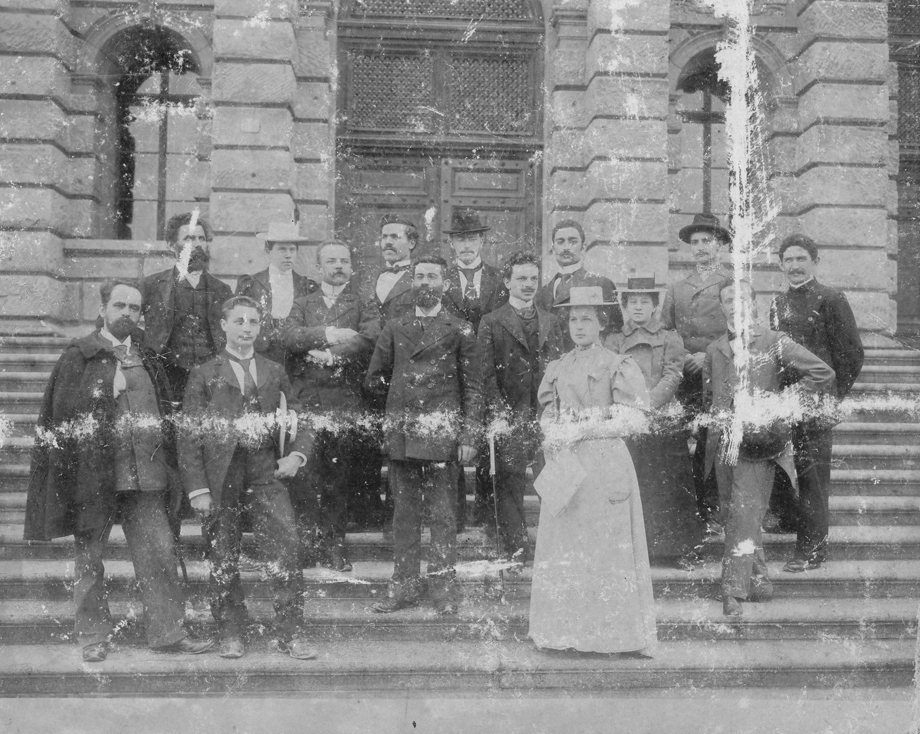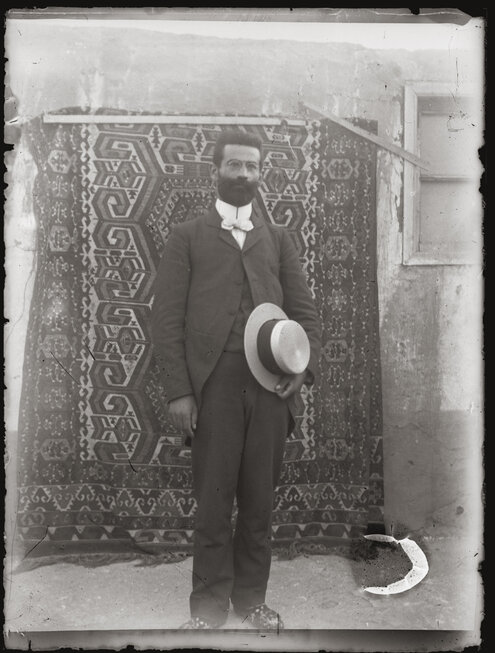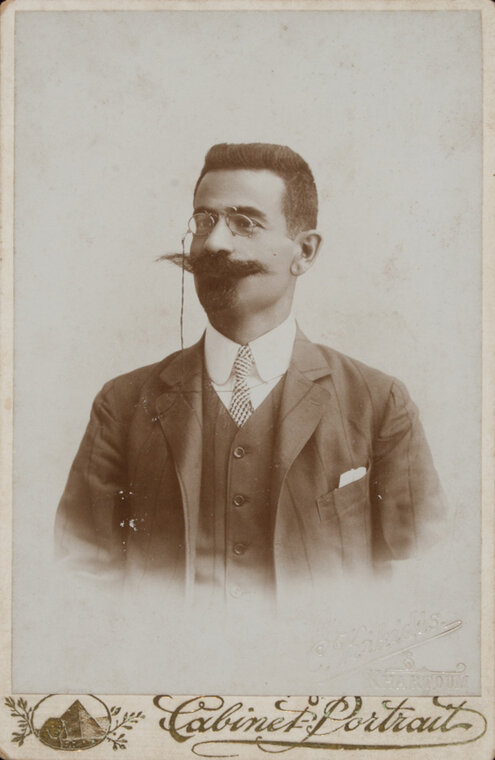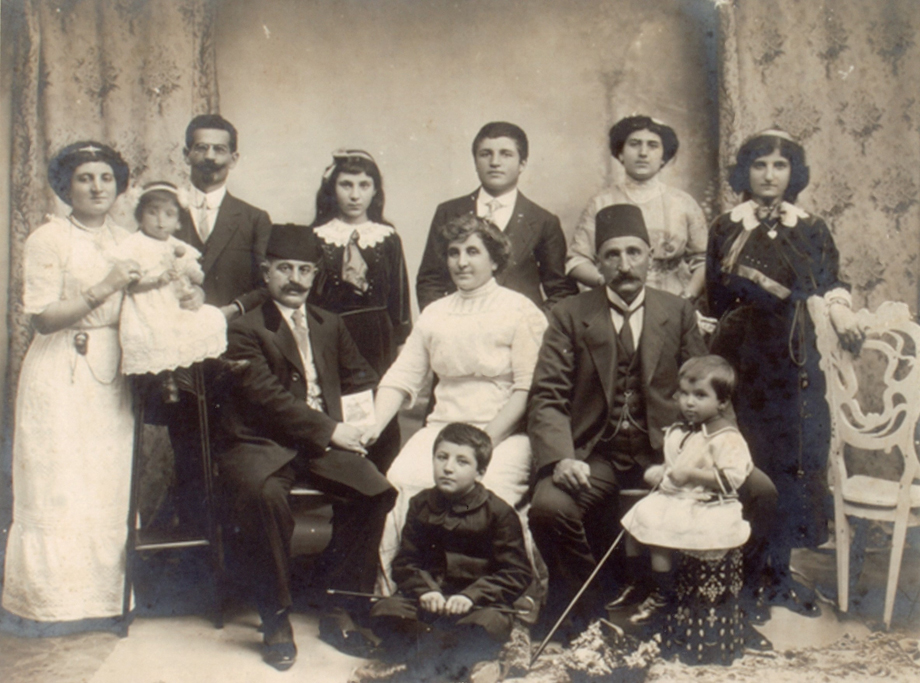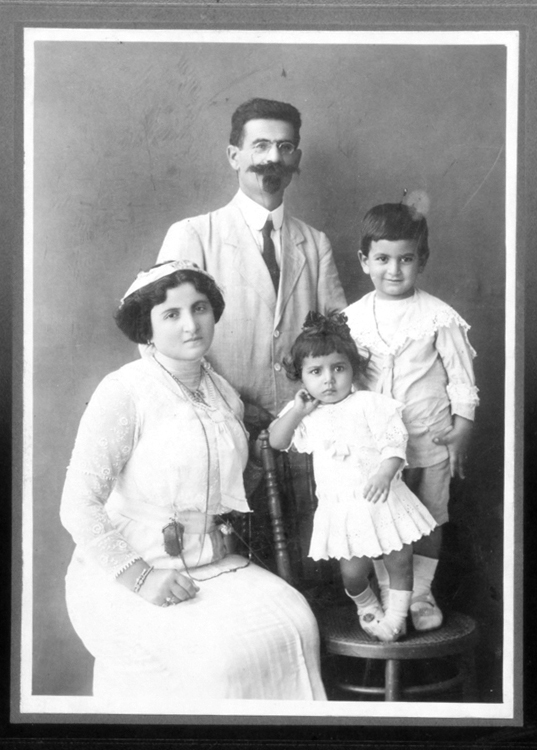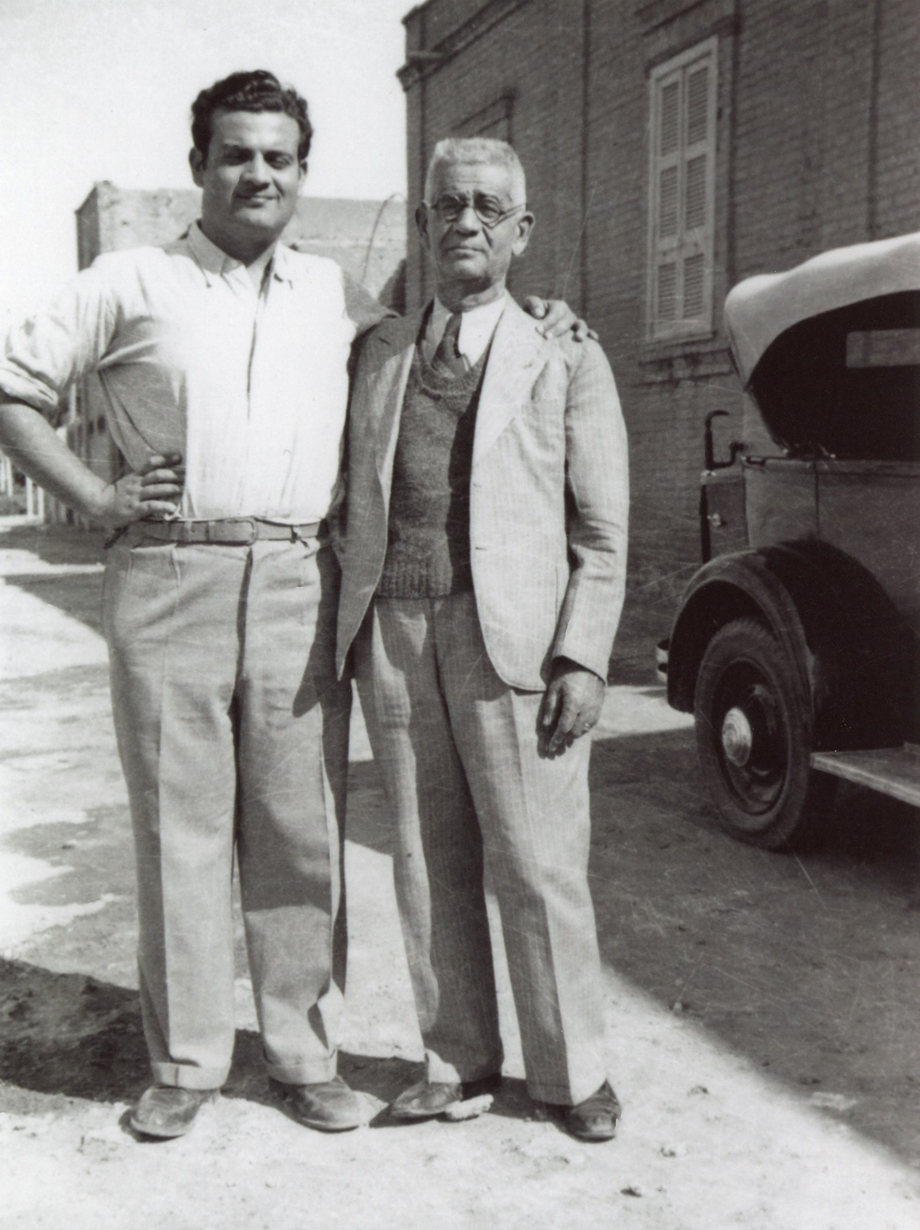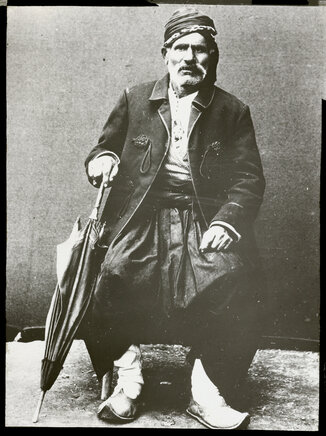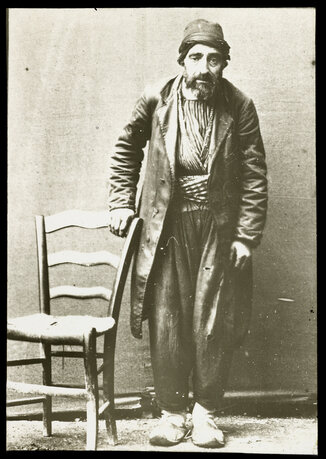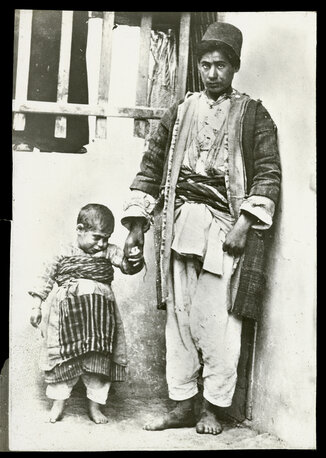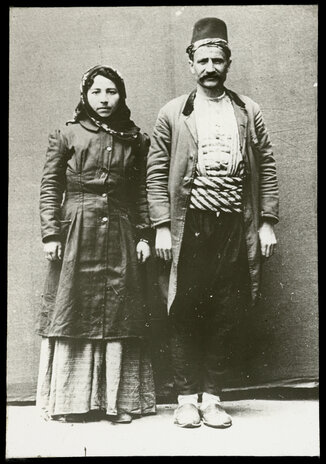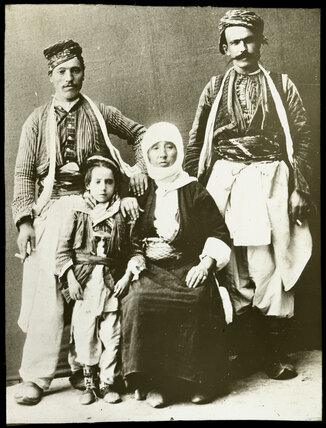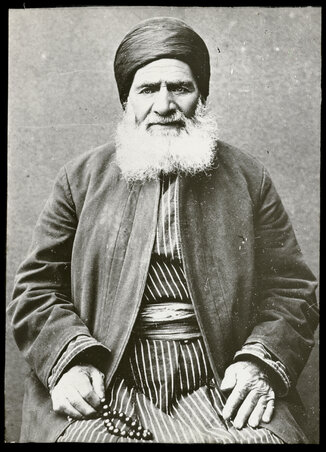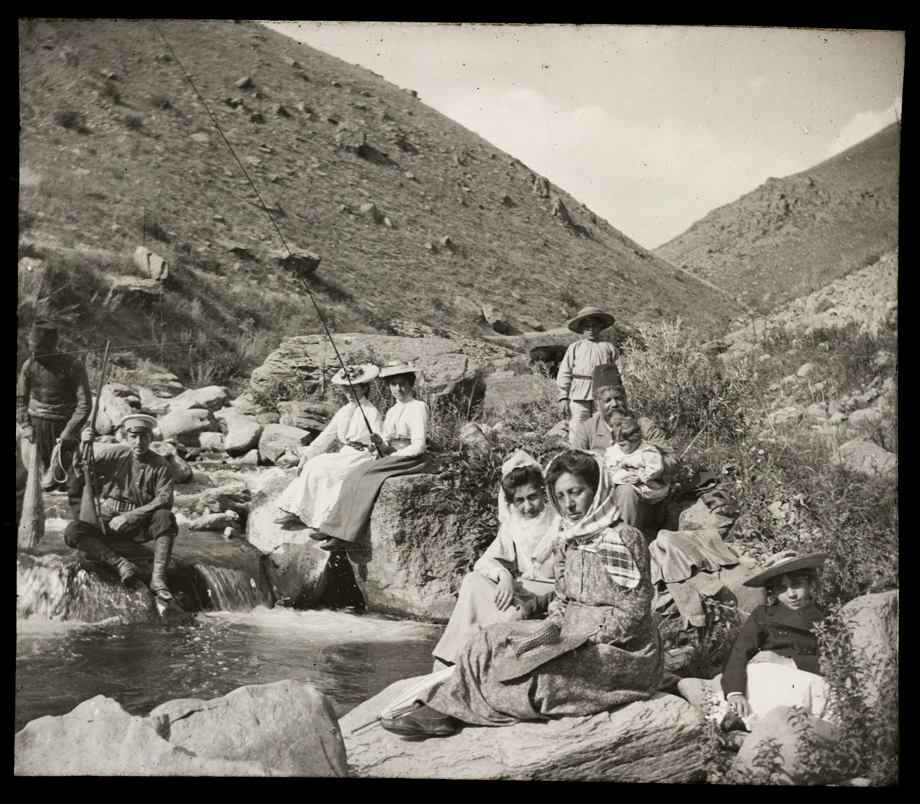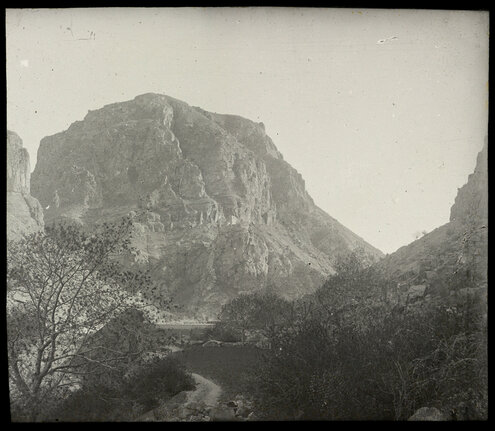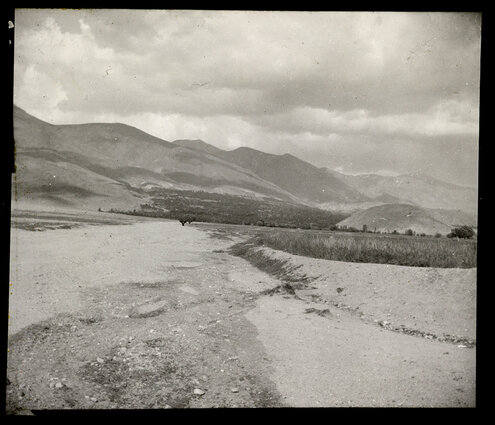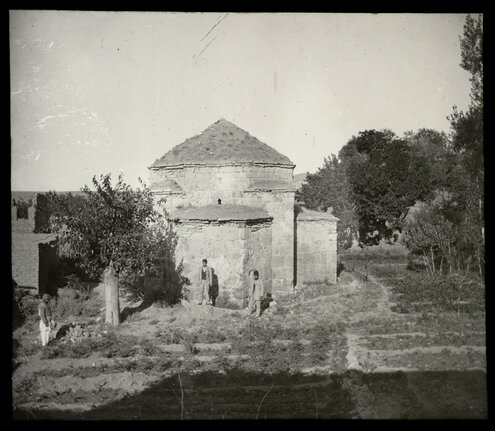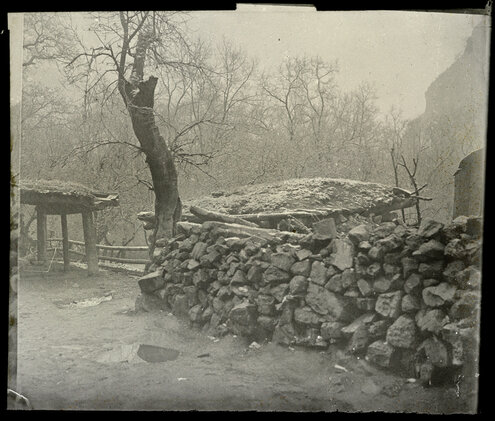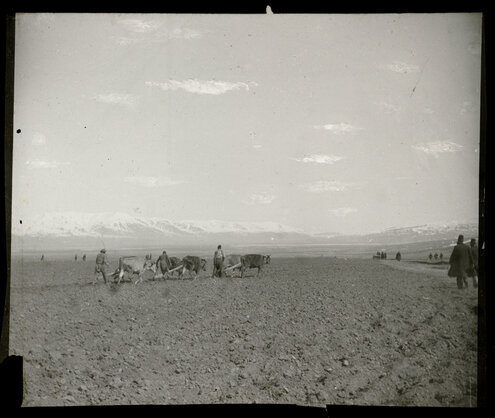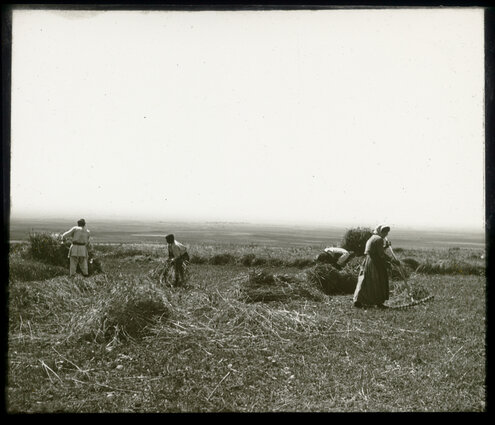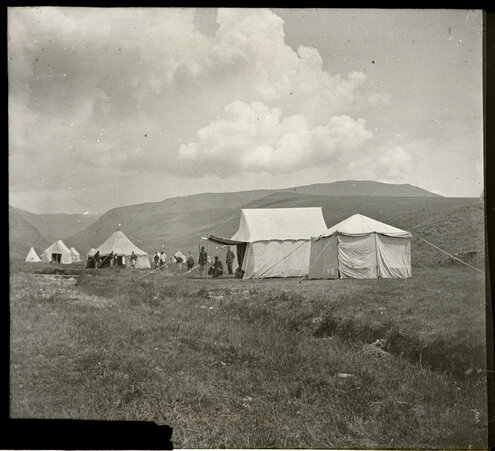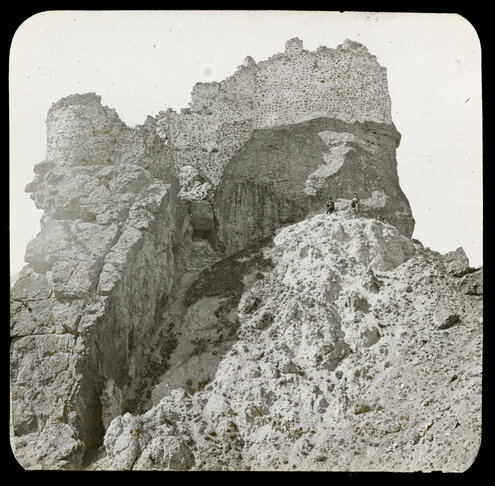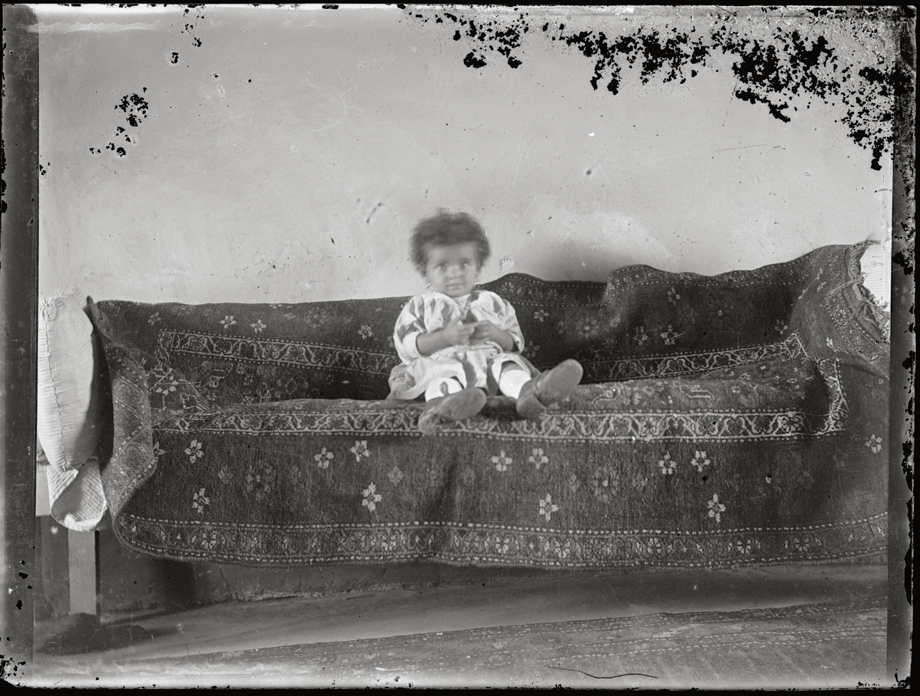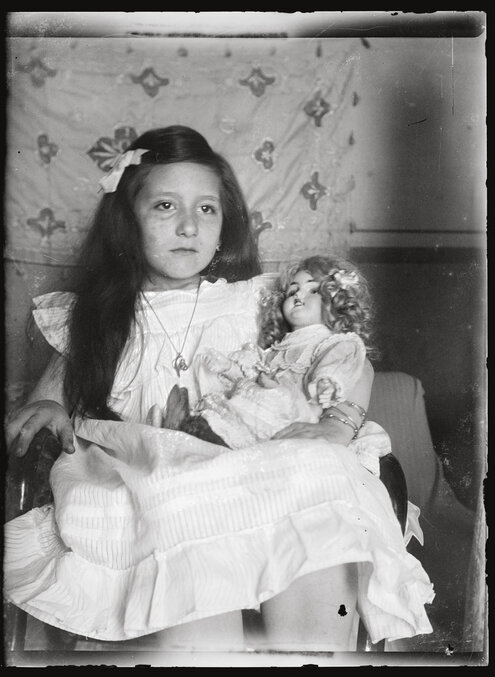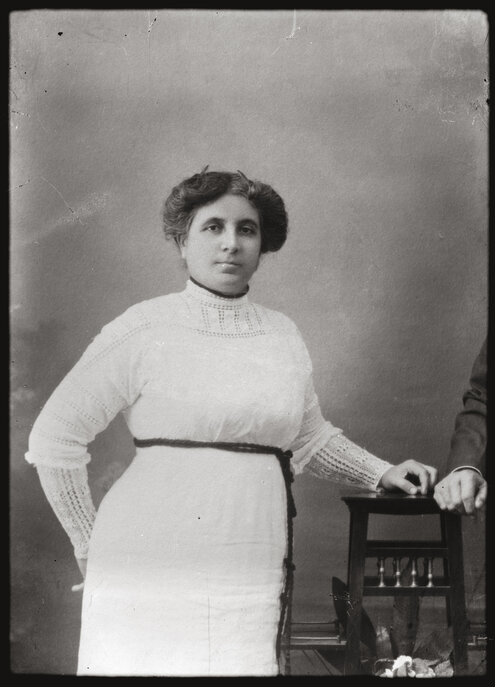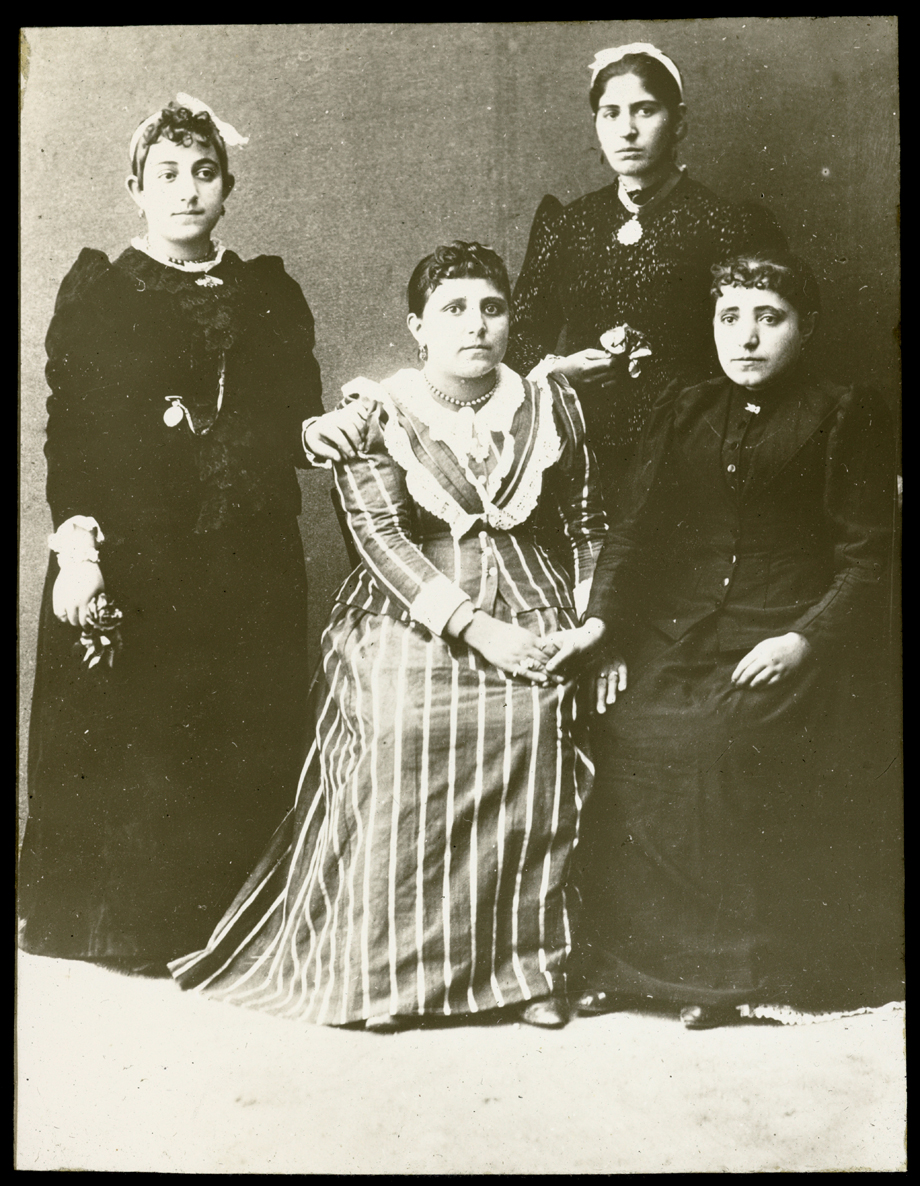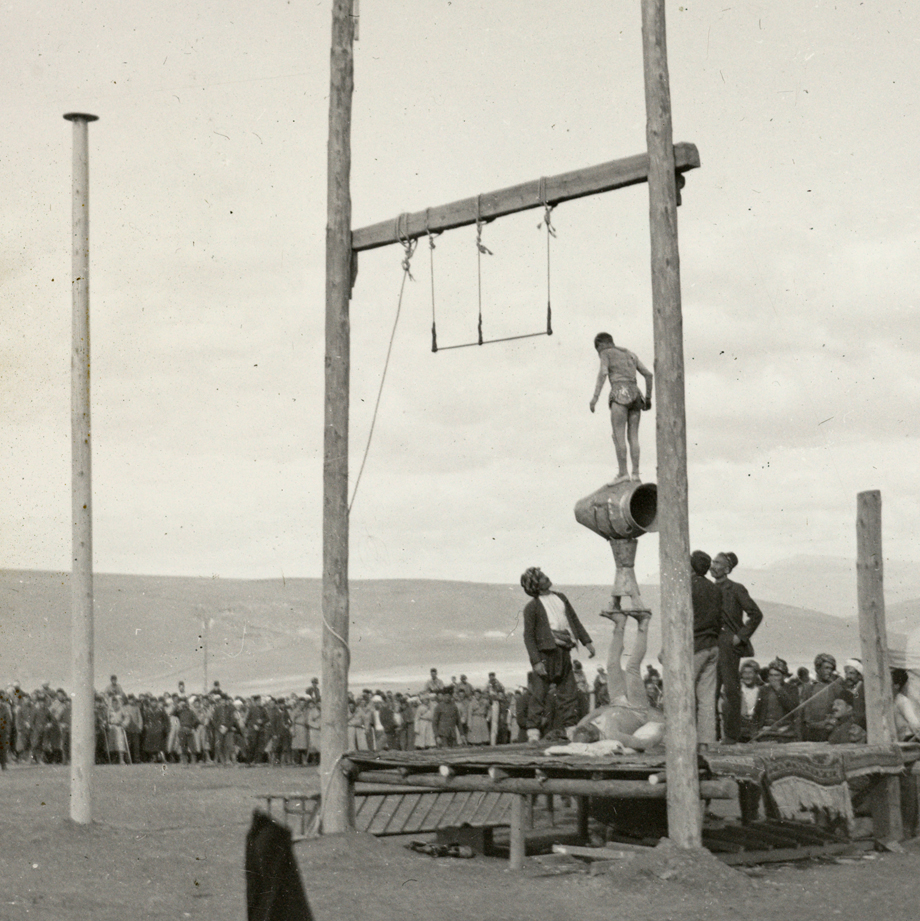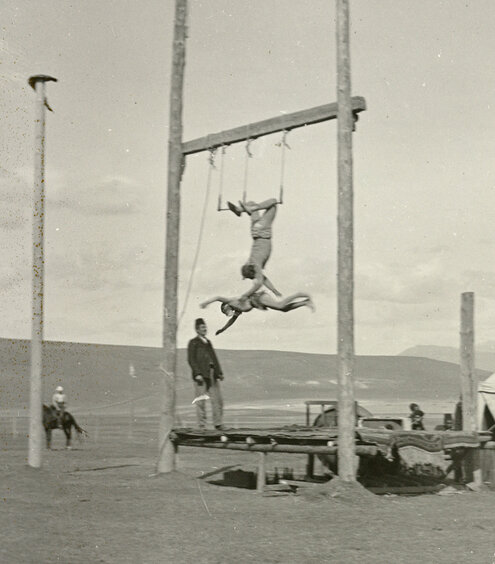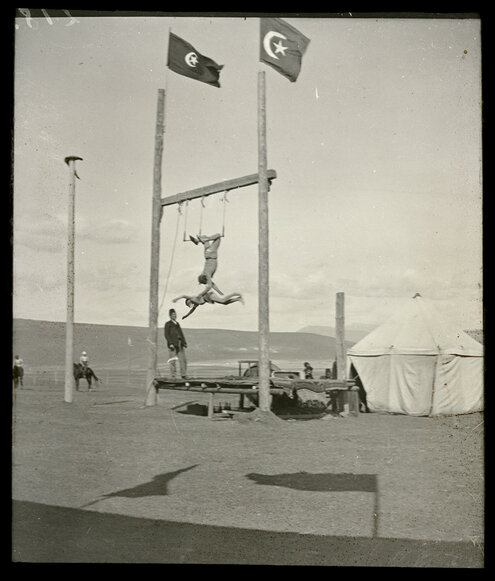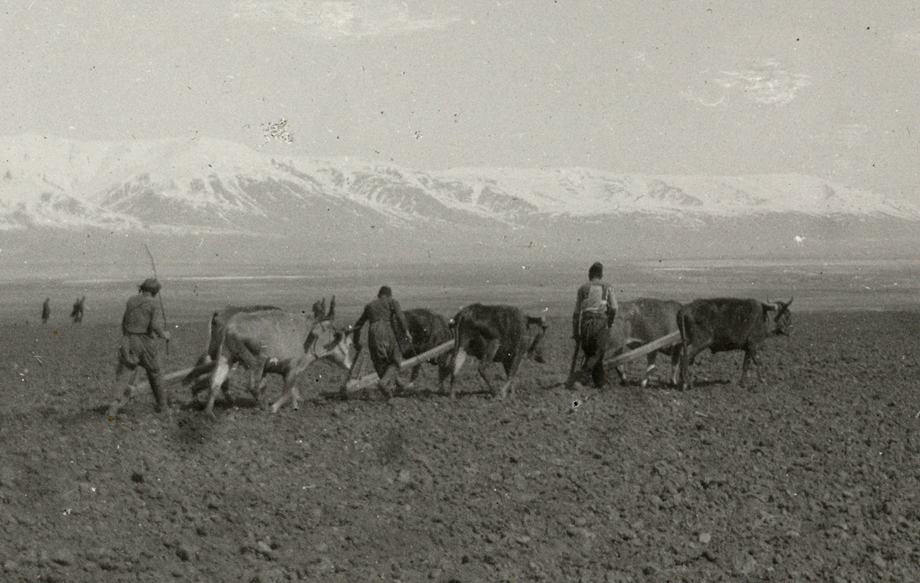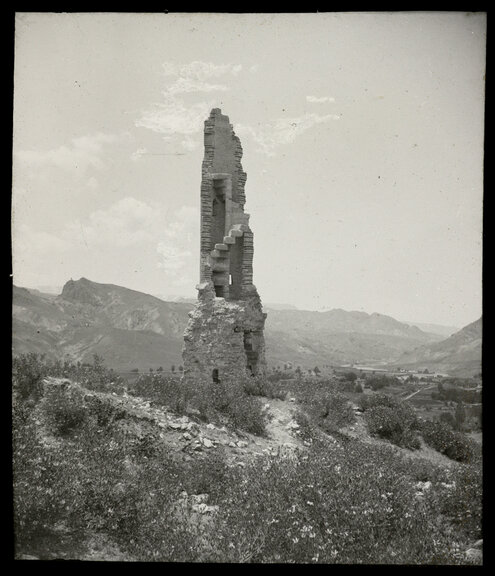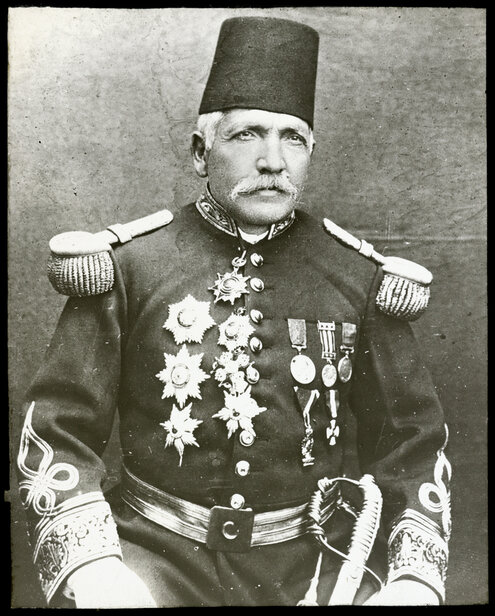The George Djerdjian photo collection

Editorial Note
Only snippets of the multifaceted rich heritage of Armenians living in the Ottoman Empire have reached us. In this context, when the question raised refers with reconstructing this past and our collective memory, we sadly have to deal with traces and relics. No wonder that we are overjoyed every time we have a chance to make that past a bit more accessible, to shed new light on it, to reveal the unseen, to bring closer that which was beyond our reach, to explain the unfamiliar; in a word, to hitch the plow and open new furrows to understand Ottoman history and daily life, and to study this expansive and uncultivated field.
The discovery of a collection of over 100 glass photographs belonging to Arapgir born George/Kevork Djerdjian (formerly Djigerdjian) is one such opportunity. They are magnificent historical photos and serve as a new window on life in Arapgir, as well as Erzeroum/Garin, during the Ottoman era. Through these photos, Armenian life of these places is revived – churches and schools that formerly had no image are now visible, and before us are placed heretofore unfamiliar pictures of family, school and orphanage life. Our sincere thanks to George Jerjian who placed high quality copies of his grandfather’s photo collection at the disposal of Houshamadyan.
It’s important to note that many of the photographs that make up the Djerdjian collection lack captions. Locales remain unknown, as well as the identity of buildings and people. It is possible that mistakes have been made in the explanations we have provided. In this matter, we rely on the assistance of our readers. We welcome any additional information on the photos or correction suggestions. You can write to us at houshamadyan(at)gmail.com

Arapgir: Town and Environs – 1900 – 1907
Arapgir: St. Asdvadzadzin Church (center). Built in 1830s. Changes to the roof first made in 1893. This photo was probably taken after the first construction work was over. It was an expansive church that had three galleries for female worshipers. The church had three entries; two facing west and one, north. The roof was completely renovated post 1907. The Djerdjian photo is pre-1907 and shows the roof in its prior state. For comparative and historical purposes, we present below two other photos (they aren’t a part of the Djerdjian collection), that were taken after 1907.
Arapgir: Hanesian Girls’ School. Built in 1890 with financing from Tateos Efendi Hanesian. 120 Armenian girls were taught at this three story school. It had six grades for children 7-13. The school was located to the north of St. Asdvadzadzin Church. After the 1895 massacres of Armenians, the first two floors were handed over to the orphanage where 40 orphans were cared for and received an education. The orphanage operated from 1898 to 1903.

"Town of Arapgir"
“The houses are built, as all towns, on an uneven surface, in an amphitheater style, in the form of an ascending stairwell. The interior appearance and style of houses resembles one more of Aleppo. All are stone built and the floors are mostly covered with choice polished stone or wood. It is pleasant to see oneself on a second floor after thinking that one has entered the first floor from the door on the street, given that houses in Arapgir generally have such a form, an appearance that is impossible to see in Van, Garin, Yerznga, Dikranagerd and many other field towns.
[…] The sand like soil particular to Arapgir, like gruel, which sticks together like a stone and is used for the roofs, preventing rain water seepage so particular to homes with dirt roofs, completes the splendor and exterior of Arapgir homes. Market, store, house, factory, garden, field, water brooklets, trees and flowers, the black and white coating of homes or exterior appearance, all these when mixed together present a diverse, aromatic, scene that isn’t difficult to imagine. This is the picture of Arapgir […]"
Margos Natanian, Masis Weekly, Constantinople, February 1885, No. 3755

Arapgir: Another photo taken on the same celebration day. The presence of flags leads us to believe it was an Islamic or state celebration. There’s a building in ruins to the right of the photo. It’s possible that it’s the aftermath of the death and devastation that occurred in 1895 when Armenian districts in Arapgir were burned and many buildings became ruin




Harput/Kharpert
Based on the photos displayed in this Harput/Kharpert section, it turns out that Djerdjian was also in the region of Harput, with his trusty camera at his side, visiting the town itself and neighboring villages. This photo depicts the historic cemetery of Khoulavank. This information was sent to us by Samuel Karapetyan. We thank him for this. He compared this Djerdjian photo with another familiar photo of Khoulavank. The similarity is striking. The old stone crosses (khachkar) are destroyed and no longer exist. This, of course, imparts a new value to the Djerdjian photo. The locale is a few minutes east of Khoulakyugh village (Hulvenk/Şahinkaya).
Girls and boys being cared for at the American Orphanage in the town of Harput. The fact that these photos were taken in Harput is verified by means of the Missionary Herald, an American magazine of the American Board of Commissioners for Foreign Missions. In its December 1897 edition (volume 93, pp. 501-503) the magazine displays these photos. (This information was provided to us by Nazan Maksudyan). The orphanage, located in the Euphrates College complex, was built after the 1895 anti-Armenian massacres during the reign of Sultan Abdülhamit II. More than one hundred Armenian orphans, boys and girls, were housed here, learning a variety of trades. The first photo shows the tailoring workshop; the second, the shoemaking unit. We know that many boys and girls from Arapgir were also cared for here. The photos were taken in 1897. According to our information, Djeredjian brought his camera equipment from Switzerland; when he returned in 1900. But the Harput photos were taken a few years before this. So, did Djerdjian possess a camera prior to 1900? Were these orphanage photos taken by someone other than Djerdjian? These are questions that remain unanswered.

Erzurum/Garin and Environs: 1900 – 1907
Sanasarian College
The Erzurum/Garin Sanasarian College was built in 1881 with financial assistance from Mgrdich Sanasarian, a merchant who had resettled to St. Petersburg. It was the most prominent and high level Armenian cultural centers that operated in the Ottoman Empire. A significant portion of the teachers received their education at European universities, especially in Germany. The school was located near the building housing the Erzurum Armenian Diocese. In 1883, 33 pupils from Arapgir were enrolled at the school. George Djerdjian was one of these pupils and later taught at the school.

Other Photos of Erzurum/Garin

Erzurum – The building in the backdrop is probably the government office (Hükümet Konağı). The imperial insignia appears at the entrance to the building, in the upper portion. This suggests it was a government building. We know that the building burnt down in those years and was moved elsewhere. The photo depicts some sort of ceremony attended by Ottoman government officials and high ranking military personnel. We thank Tolga Cora for this information.
St. Asdvadzadzin Monastery. Located 1.3 kilometers southwest of Aksikoms/St. Ohan village (now Demirdöven), or 6 kilometers northeast of town of Hasankale (now Pasinler). This village is located in the district of Pasen in the Erzurum vilayet. The monastery is also chronicled with the names Makisdros, Diramayr, Yotn Virats and Diranyats. Built in the 11th century, it was destroyed in the middle of the 20th century (Source of the information: Another Genocide after the Genocide, RAA (Research on Armenian Architecture), Yerevan, 2015)





George Djerdjian: Personal and Family Photos
Unidentified Photos
Information regarding these photographs is lacking. Do you know where the place showing in the photo is located? Do you know what the structure appearing in the photo signifies? Do you know the name of this or that person? If so, please write us at houshamadyan@gmail.com





